2022 Impact Report







Agriculture is undergoing a paradigm shift. Technology and digital data are transforming the way we farm. And society is demanding more and more of agriculture.

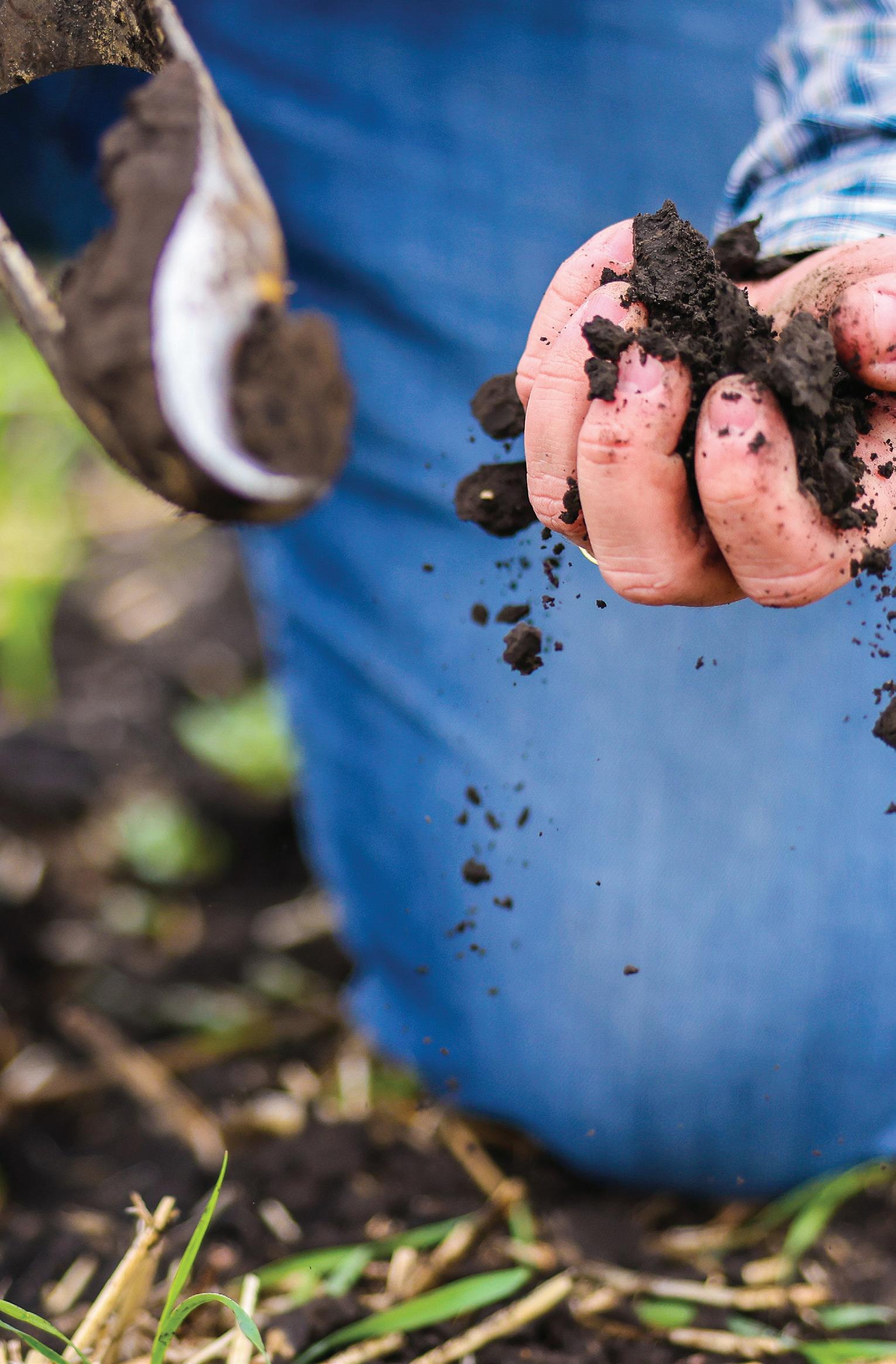
The Smart Farm at Olds College of Agriculture & Technology brings together the most innovative technology and ideas, leaders in research, science and agriculture, and students who will lead the way tomorrow. This combination of people and ideas works on a campus that includes a 3,600 acre lab for crop and livestock production, as well as high-tech learning environments that fuel innovation. The Smart Farm creates a place to investigate the opportunities and challenges facing the industry, and build the solutions that will evolve agriculture.
Solutions that will feed a growing population, reduce agriculture’s environmental footprint and enhance the agriculture industry in Canada.
Technology continues to influence the way we live, work and farm. Smart farms and technology development have a critical role to play in the global grand challenge of feeding a growing population with fewer resources while reducing the environmental impact.
The Smart Ag Ecosystem at Olds College of Agriculture & Technology is focused on accelerating the progress and innovation needed to grow Canada’s ag industry — and the Smart Farm is at the heart of it all. The Smart Farm includes 3,600 acres of farmland, infrastructure and staff who are experienced in ag tech research and development.
The Smart Farm creates a place for producers, industry partners, students and faculty to look at the opportunities and challenges facing the agriculture industry and investigate solutions to evolve agriculture practices.
New technologies for agriculture require in-field testing and validation in the setting of an operating farm to move through the innovation chain, and into the hands of farmers and producers. The Smart Farm
offers lab space and a hands-on learning environment including 3,600 acres of land for crop and forage production, state-of-the-art equipment and technology, 140 commercial cattle, 16 Purebred Red Angus and 150 ewes — as well as a feedlot, brewery, greenhouses and other infrastructure.
The ability to develop, validate and test products using technology and applied research in real agriculture settings continues to bring new projects to the Smart Farm.
The projects on the Smart Farm are as diverse as the teams working on them — faculty, researchers, industry leaders and students are all involved. Work-integrated learning goes hand-in-hand with applied research at Olds College of Agriculture & Technology.
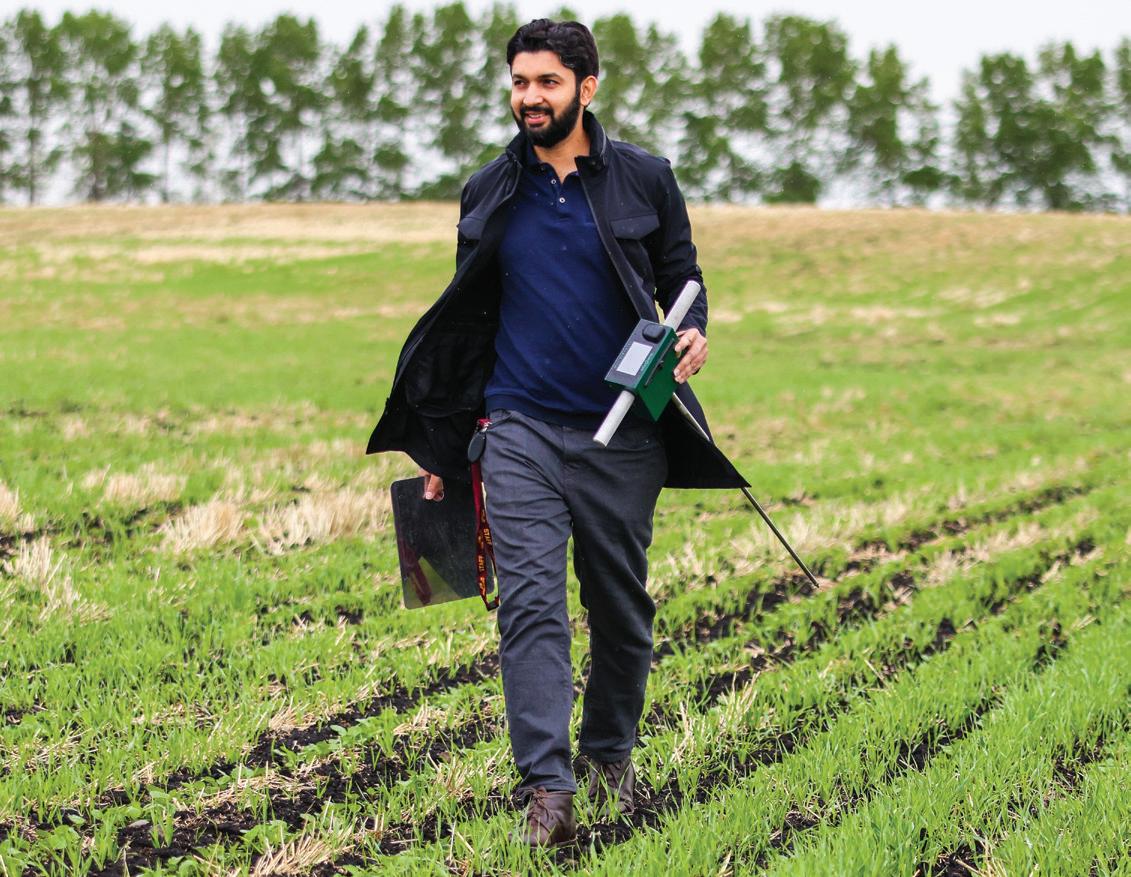
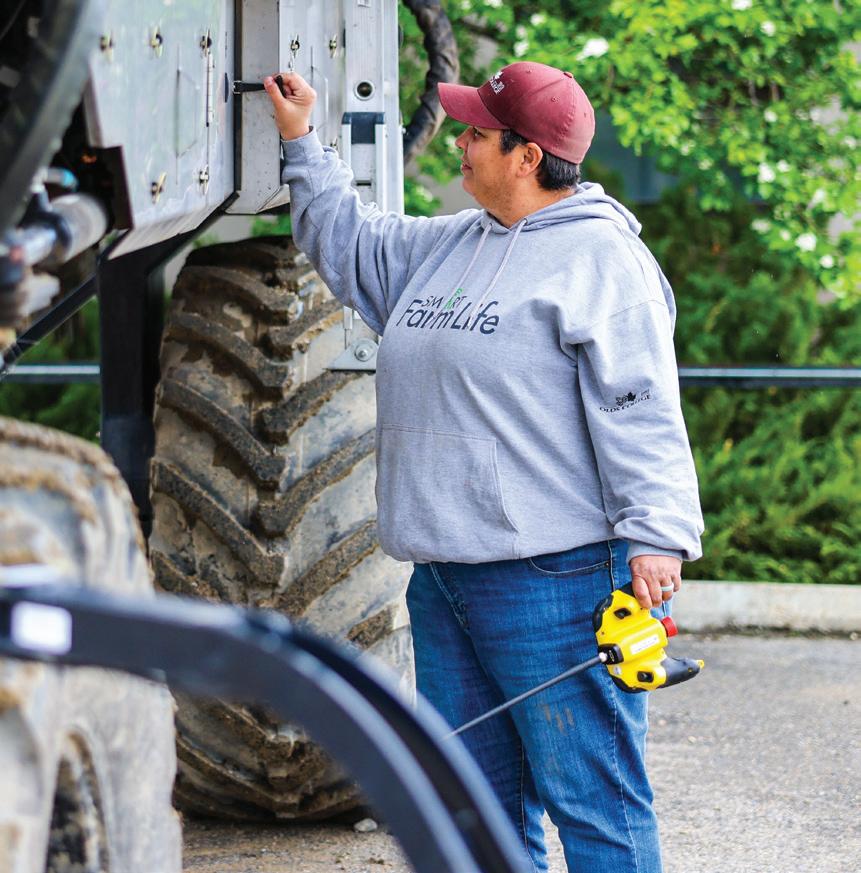
The purpose of the Smart Farm is to implement the world’s best digital agriculture technologies for crop and livestock production; improve farming operations and efficiencies through smart technologies and
practices; and utilize technologies for world class education, demonstration and applied research. Primary research areas are focused on crop production, livestock production, environmental stewardship, cereal breeding and technology integration.
With 3,600 acres of farmland to work with, the crop research team is able to perform in-field crop research with small plot trials and full-field commercial scale investigations.
The facilities and assets of the Technology Access Centre for Livestock Production (TACLP) — including a commercial cattle herd and 1,000-head capacity feedlot — can be utilized to demonstrate and advance the use of technology to improve production efficiency, animal health and welfare, and enhance environmental sustainability.
Olds College of Agriculture & Technology is home to a constructed wetlands facility dedicated to surface water resource management solutions, applied research and education. Research goals include ways to negate water shortages, cost-effective and efficient methods of water management, and creating ways to promote and enable environmental stewardship.
In collaboration with the Smart Farm, the Field Crop Development Centre aims to streamline the breeding process to develop better barley and triticale varieties faster. Agromatic traits — such as yield, standability, lodging resistance and disease resistance — are primary goals for the breeding programs.
Smart Ag Applied Research supports the refinement and optimization of technologies, and provides manufacturers and users with information on functionality, accuracy and value of technologies — particularly in Alberta stubble, soil and climate conditions.
Smart and precision agriculture are heavily reliant on data — developing a Digital Ag Strategy is providing guidance for the collection, integration and utilization of agricultural data for evidence-based decision making.
Olds College of Agriculture & Technology is conducting futurefocused research on the evaluation and improvement of economic, environmental, and logistical benefits of autonomous agricultural equipment for broad acre crop production.
None of this research can be done without the support of government, industry, partners, donors and investors — their contributions to the advancement of technology in agriculture is essential.
Thanks to a generous donation of 800 acres near Craik, Saskatchewan by Margery Steckler and her late husband George Steckler, the College has expanded farming operations and formed the Olds College Saskatchewan Smart Farm.
This gift of land from the Stecklers has grown the Smart Farm to 3,600 acres of farmland, and provides a platform for the College to partner with post-secondary institutions, industry, and local producers by providing ag-tech training and research opportunities to support the Saskatchewan agriculture industry.
Committed to the advancement of agriculture, farmers and education, George and Margery Steckler have truly created a legacy gift here at Olds College of Agriculture & Technology.
The purpose of the Smart Farm is to implement the world’s best digital agriculture technologies.
The strategic intent of Olds College of Agriculture & Technology and the Smart Farm is to better the agricultural industry. This happens by educating students, performing research, testing products and services, and communicating the benefits of those products and services in the marketplace.
The ecosystem at Olds College provides partners with a unique means of gaining boots-on-the-ground testing and learnings for their technologies and practices. This also includes support in disseminating results to producers and other industry stakeholders through communications and events, such as our annual educational expo AgSmart.
Strategic partners benefit from an environment of teaching and learning, and an ecosystem that brings community members together. Olds College has the ability to test products and technology, and to educate and communicate the learnings and applications to students, farmers and industry.
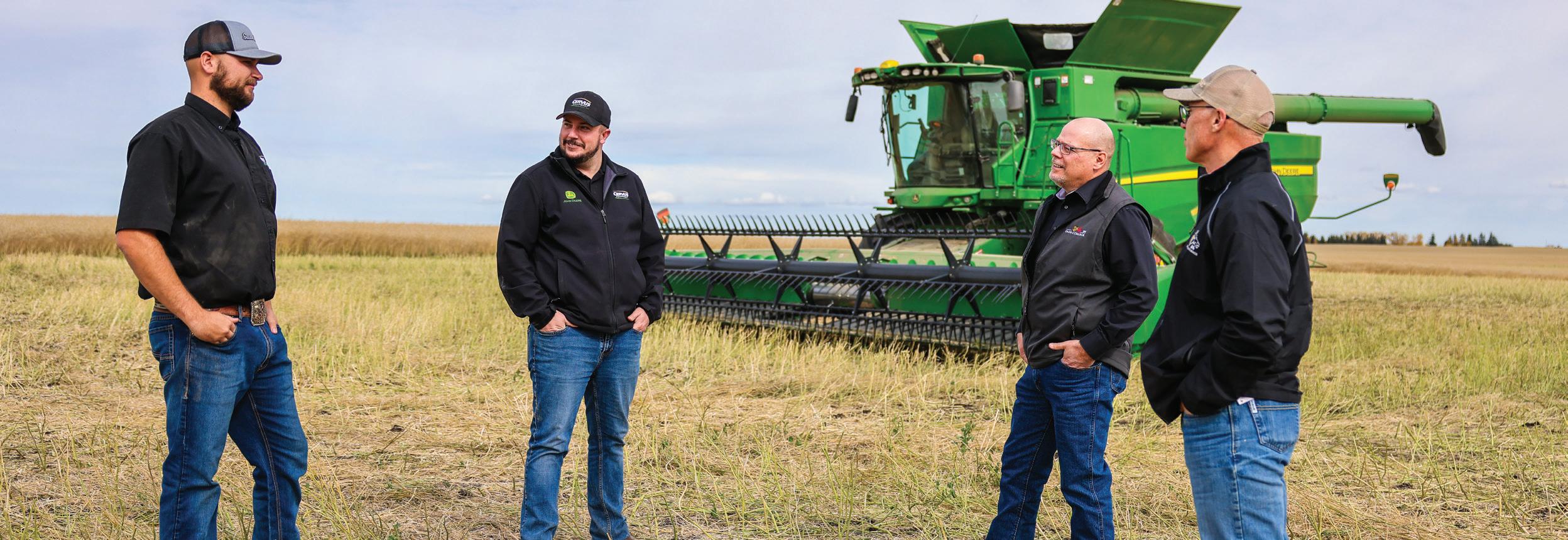
Strategic partners also benefit from the College’s ability to support development, validation, scaling and demonstration of technologies and practices. Through connections with Alberta Innovates, the Central Alberta Regional Innovation Network (CARIN), SVG Thrive and UCeed, the Smart Farm is able to connect clients with business readiness supports, training and resources to help innovators market products and ideas — which includes access to venture capitalists to
further develop ideas. The Smart Farm offers guidance to external networks and support systems, provides training and resources to market products and ideas, and encourages innovation towards a sustainable agriculture industry.

Applied research is at the heart of the Olds College Smart Farm. Having 3,600 acres of farmland for crop and forage production, state-of-the-art equipment and technology, and cattle and sheep provides a real strategic benefit in providing results producers can use. The Smart Farm provides researchers and partners with the ability to take things that are new and novel, and may still require development, and apply them to a real-world environment. This gives our strategic partners the opportunity to truly see their technology in action.
Strategic partnerships encourage this collaborative spirit. Partners such as TELUS Agriculture, ATB Financial, Farm Credit Canada, United Farmers of Alberta, Trimble and Thrive by SVG Ventures are actively supporting applied research and the work on the Smart Farm to bring real solutions for real challenges.
The work continues and Olds College welcomes strategic partners who are looking to invest in building solutions, who are looking to test solutions, or who are still developing solutions. The Smart Farm is a place that can bring everyone together to support the work of bettering agriculture.
The Olds College Smart Farm. Canada’s first Smart Farm. A leading-edge learning environment that has grown to 3,600 acres.
I’m so proud of the accomplishments we’ve achieved over the last five years at the College.
The collaboration between companies, institutions, investors, producers, researchers, faculty and students on the Smart Farm directly contributes to advancing agriculture and accelerating the progress and innovation needed to grow Canada’s ag industry.
New technologies for agriculture require development, in-field testing and validation in the setting of an operating farm to move through the innovation chain — and into the hands of producers and other agriculture participants. The Olds College Smart Farm provides this invaluable lab space and hands-on learning environment for industrydriven applied research, which falls directly in line with our social purpose of transforming agriculture for a better world
We strive to get the information generated on the Olds College Smart Farm into the hands of the people who will spur the adoption of ag technologies which benefit producers, innovators and industry stakeholders. Sourced from a series of partner and stakeholder interviews, this Smart Farm Impact Report highlights the impact our industry-driven applied research, education and training is making in Alberta and beyond.
I’d like to also take a moment to personally thank a couple of our donors who have made direct and substantial contributions to the Olds College Smart Farm.
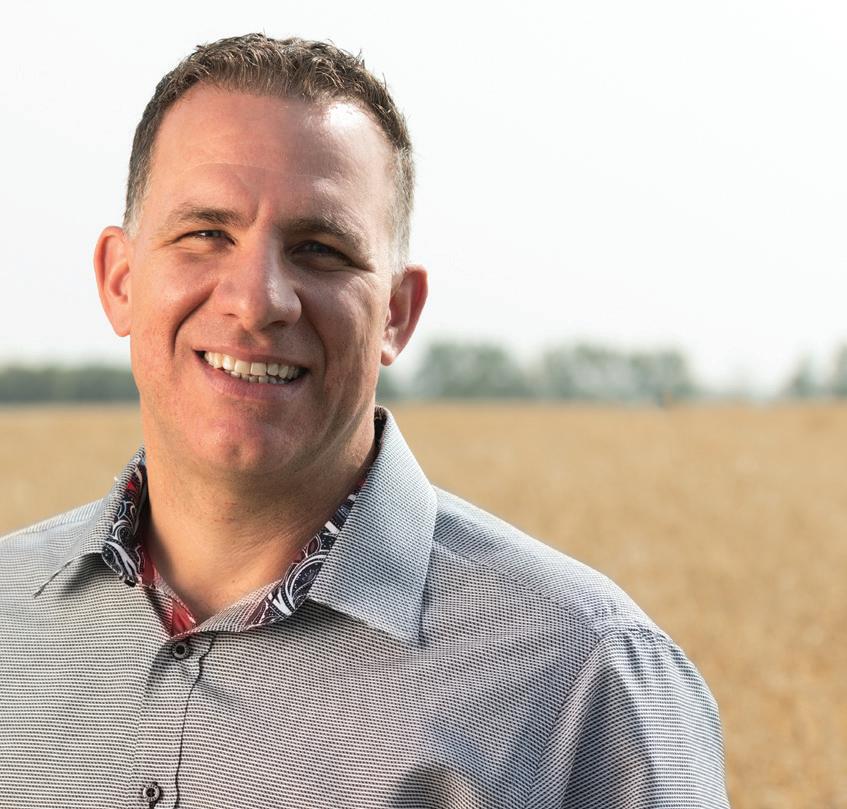
The support from our good neighbours, Margery and George Steckler, is instrumental to the Olds College Smart Farm — and its
expansion to 3,600 acres. Harvesting our first crop last year on the Steckler Farm was a momentous milestone. And this year, their donation of 800 acres in Craik, Saskatchewan allowed us to form the Olds College Saskatchewan Smart Farm. The Stecklers are helping the College reach beyond our borders to expand our ag-tech training and applied research opportunities here in Alberta — and now in Saskatchewan. Their legacy and generosity is endless.
I also want to thank Bob and Carollyne Collier for their continued support of our students, the Smart Farm and the agriculture industry. Their recent $2 million gift is supporting enhanced learning experiences of students within the Werklund School of Agriculture Technology, along with the growth of smart ag applied research and development of the Olds College Smart Farm. We’re so happy you’ve been inspired by the entrepreneurial spirit shown by our students.
Signing memorandum of understandings with Saskatchewan Polytechnic, the University of Saskatchewan, and the Swedish University of Agricultural Sciences helps Olds College of Agriculture & Technology build a strong network of post-secondaries committed to supporting education, sustainability and technology in the ag industry. As home to Canada’s first Smart Farm, we also continue to lead the Pan-Canadian Smart Farm Network to build a collaborative framework among Canada’s Smart Farm initiatives.
I proudly present the 2022 Smart Farm Impact Report to showcase our industrydriven applied research, education and training — and the positive impact we’re making in Canada’s ag industry.
There are seven pillars of the Smart Ag Ecosystem at Olds College of Agriculture & Technology that are fundamental to the success of the Smart Farm — a true ecosystem where producers, industry partners, small and medium-sized enterprises (SMEs), students and faculty can collaborate and work towards advancing agriculture.
View our interactive Smart Farm map with this QR code or go to oldscollege.ca/smartfarm

At the heart of the Smart Ag Ecosystem is the Smart Farm and Smart Farm Operations. This leading-edge learning environment has grown to include 3,600 acres of farmland, infrastructure, and staff who are experienced in ag tech research and development.
The Physical Infrastructure at Olds College — including a national meat training centre, brewery, greenhouses, wetlands and more — provides endless opportunities for students and everyone in the ag sector to learn and grow.
The Digital Ag Infrastructure is a growing piece of the ecosystem and critical component that allows Olds College to launch and execute Smart Ag research. The world of agriculture is becoming reliant on the ‘internet of things’, and this infrastructure is essential for the ag tech evolution.
Practical and industry-driven Applied Research is key to accelerating the development and adoption of technologies and practices. The research experts on the Smart Farm work with innovators and SMEs to move their ideas and products through the innovation chain — and into the hands of farmers and producers.
Strategic Partnerships and investors allow Olds College to build and operate the Smart Farm with the flexibility needed to support innovation and development.
Academic Programming in a post-secondary institution that provides training, skills, and work-integrated learning for the next generation of users and developers of ag technology is at the core of Olds College.
The Knowledge Transfer Platform ensures the information generated on the Smart Farm gets into the hands of producers, researchers and industry stakeholders who can accelerate the progress and innovation needed to grow Canada’s agriculture industry.

Olds College of Agriculture & Technology is proud of the research teams, instructors and staff that drive applied research in the areas of crop production, livestock production, environmental stewardship, cereal breeding and technology integration. Expertise on the Smart Farm continues to grow with research team members, managers, scientists and technicians as well as students, interns and seasonal staff running the various applied research projects throughout the year. The notable designations of the professionals and experts at Olds College include: Ph.D., M.Sc., B.Sc., Diploma, P.Ag., P.Eng., MBA, and a combined total of decades of practical science and agricultural experience.
Olds College has extensive physical assets that provide the testing ground and living labs for applied research, training and education. Combined with world-class talent and subject matter experts, these assets create an unparalleled opportunity for technological innovation and development. This asset list includes:
• Smart Ag Innovation Centre
• Field Crop Development Centre
• Technology Access Centre for Livestock Production (TACLP)
• Labs & 1,000-head capacity feedlot
• Beef & Livestock Centre
• National Meat Training Centre
• Farm Operations Centre & Equipment
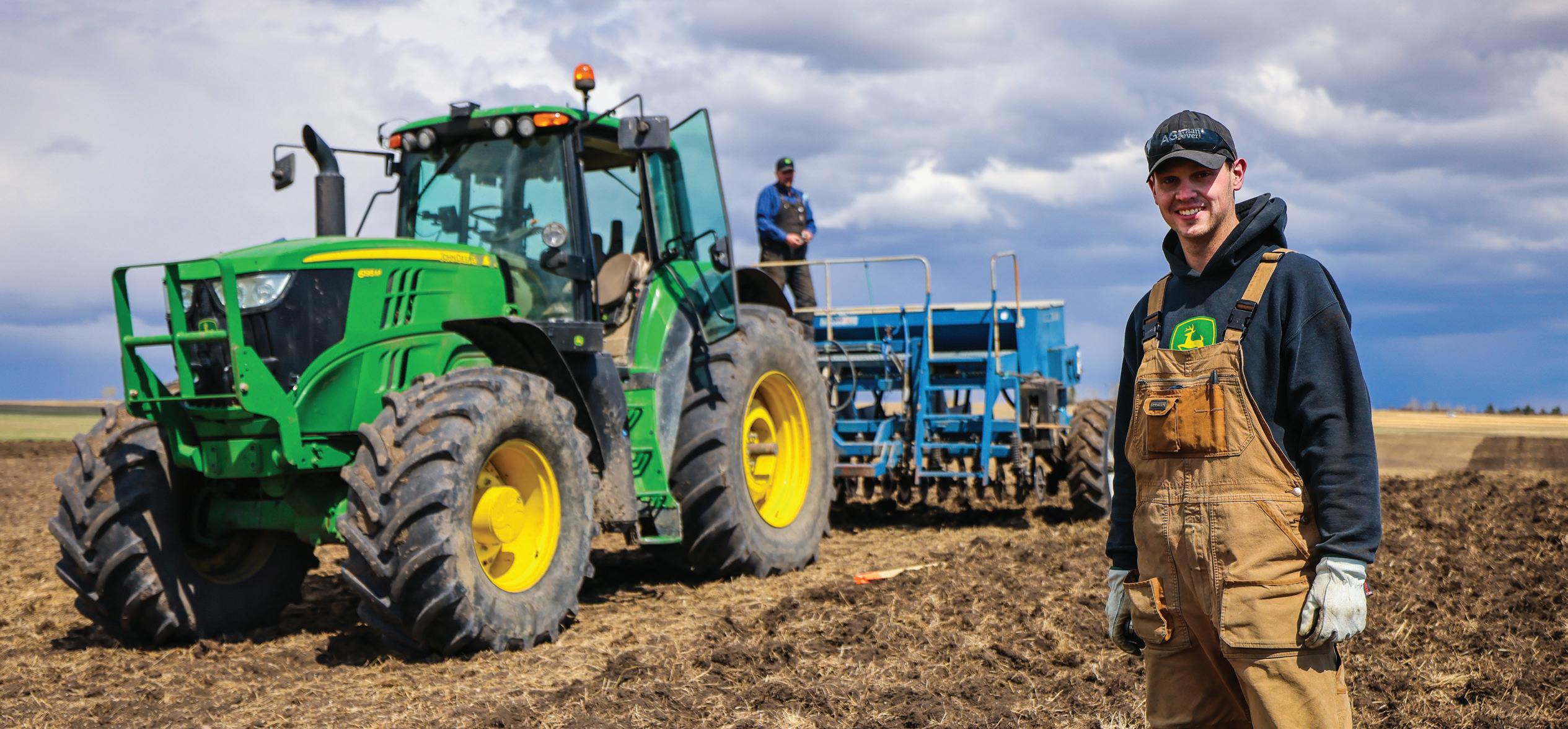
• Brewery
• Greenhouses
• Soils, Plants & Chemistry Labs
• Incubator Space
• Equine & Rodeo Centre
• Conference Services
Olds College is always open to new projects and partnerships, and has top facilities to deliver real-world results.
Expertise on the Smart Farm continues to grow with research team members, managers, scientists and technicians as well as students, interns and seasonal staff running the various applied research projects throughout the year.

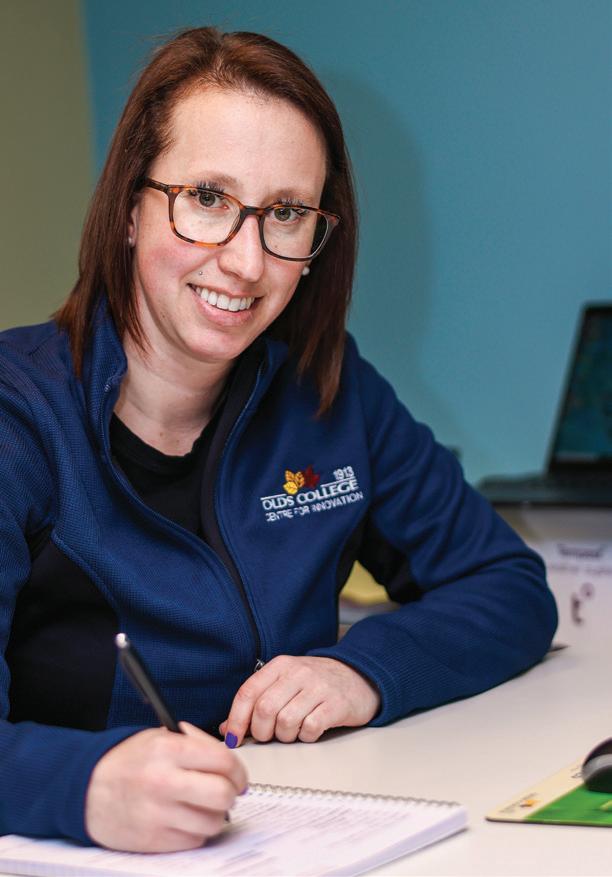
Agricultural Engineering Agriculture Business Management Animal Health, Science & Welfare
Crop Production Data Science & Agronomy
Instrumentation
Land & Water Reclamation
Livestock — Genetics, Reproduction, Nutrition, Production & Management Machine Automation
Molecular & Environmental Plant Science Plant Pathology, Entomology & Nematology Precision & Digital Agriculture Project & Ag Business Management
Rangeland Health Remote Sensing Technology Soil Science Technology Development Telematics & GIS/GPS

Partnerships are the foundation of the work at Olds College of Agriculture & Technology. Whether financial, academic or experiential, these partnerships raise the bar for what can be delivered.
To date, Olds College Centre for Innovation (OCCI) has engaged with over 185 clients, partners and organizations which resulted in over 100 companies and organizations becoming engaged in a project with OCCI.
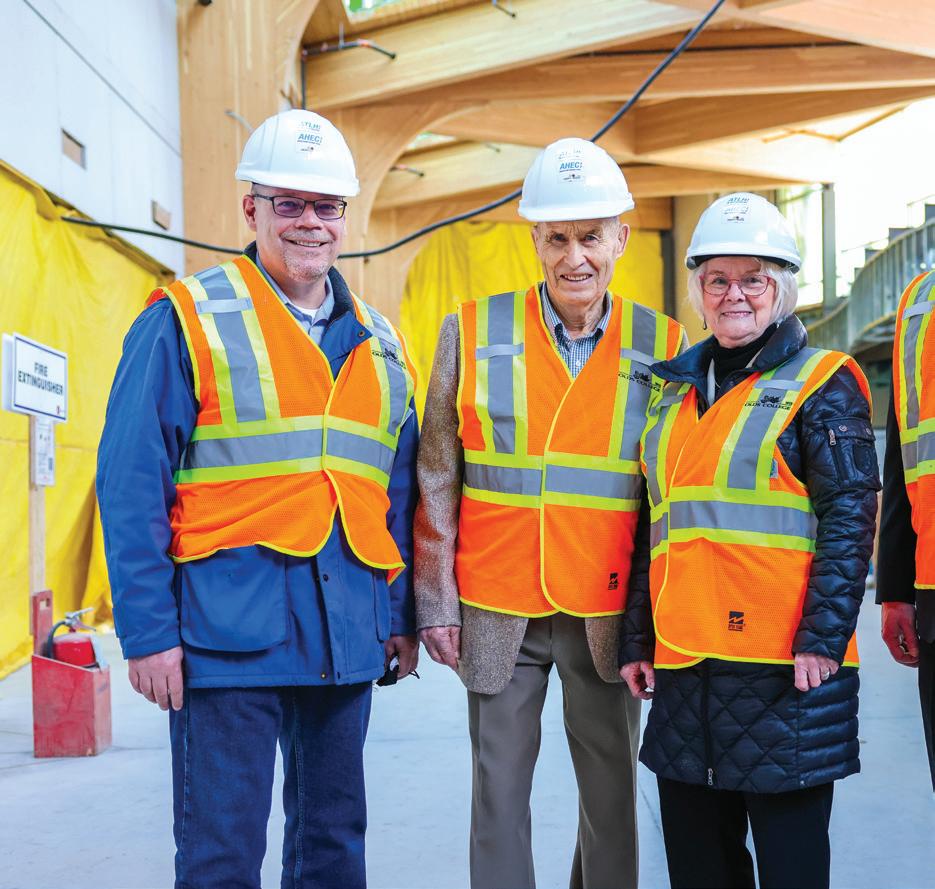
Olds College Smart Farm Partnerships include:
• 148 small and medium-sized enterprises (SMEs)
• 8 donors
• 22 industry networks
• 13 research collaborators
• 16 sponsors
The Stecklers have been integral to the growth of the Olds College Smart Farm. They donated 800 acres of land in Craik, Saskatchewan which formed the Olds College Saskatchewan Smart Farm, and the 310 acre Steckler Farm near Didsbury, Alberta which was farmed by the College for the first time in 2021. Smart technology was used to track and monitor Steckler Farm during the growing season, and allowed Marge Steckler to see the progress in real time from her home. As well as farmland, the Stecklers also created a $100,000 endowment that provides $5,000 in bursaries for students each year.
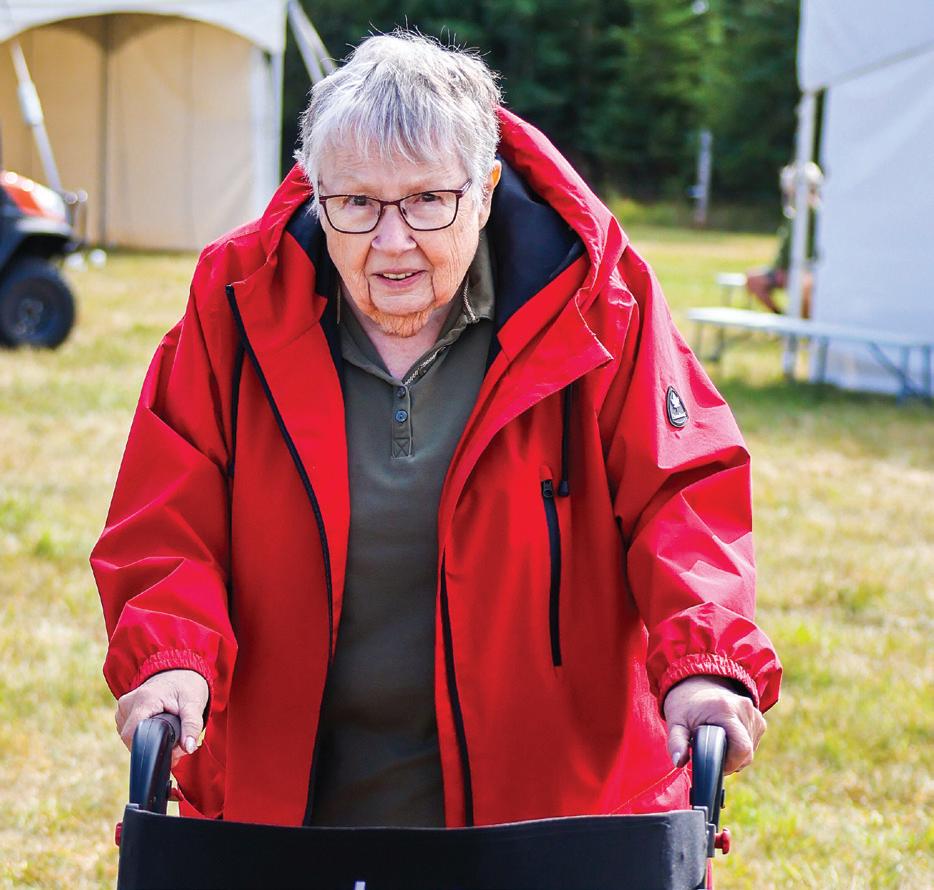
$2M donation — Bob and Carollyne Collier gifted Olds College $2 million in 2022. Bob was an entrepreneur and admired the innovation taking place at the College. The funds will go towards the development and delivery of enhanced academic programming. Additionally, the funds will support smart ag applied research and the development of the Olds College Smart Farm as an innovative learning, demonstration, and applied research environment for students, producers, and the agriculture sector in Alberta and around the globe. In recognition of their $2 million gift, the heart of the new Werklund Agriculture and Technology Centre will be named the Bob & Carollyne Collier Student Commons, and will be a central gathering space for students, faculty and guests of Olds College.
A Memorandum of Understanding (MOU) is used to connect two schools who agree to work together on certain projects.
• Olds College and Saskatchewan Polytechnic signed a MOU to collaborate in joint activities on the Olds College Saskatchewan Smart Farm including student work-integrated learning, technology demonstration and validation, and applied research activities.
• Another MOU was signed between Olds College and the University of Saskatchewan to collaborate on joint activities related to automation and increased incorporation of digital data in agriculture. One of the first areas of collaboration will be supporting livestock research.
• Olds College also signed a MOU with Swedish University of Agricultural Sciences to facilitate student exchange between the two institutions, and help students expand their world views and enhance cross collaboration opportunities.
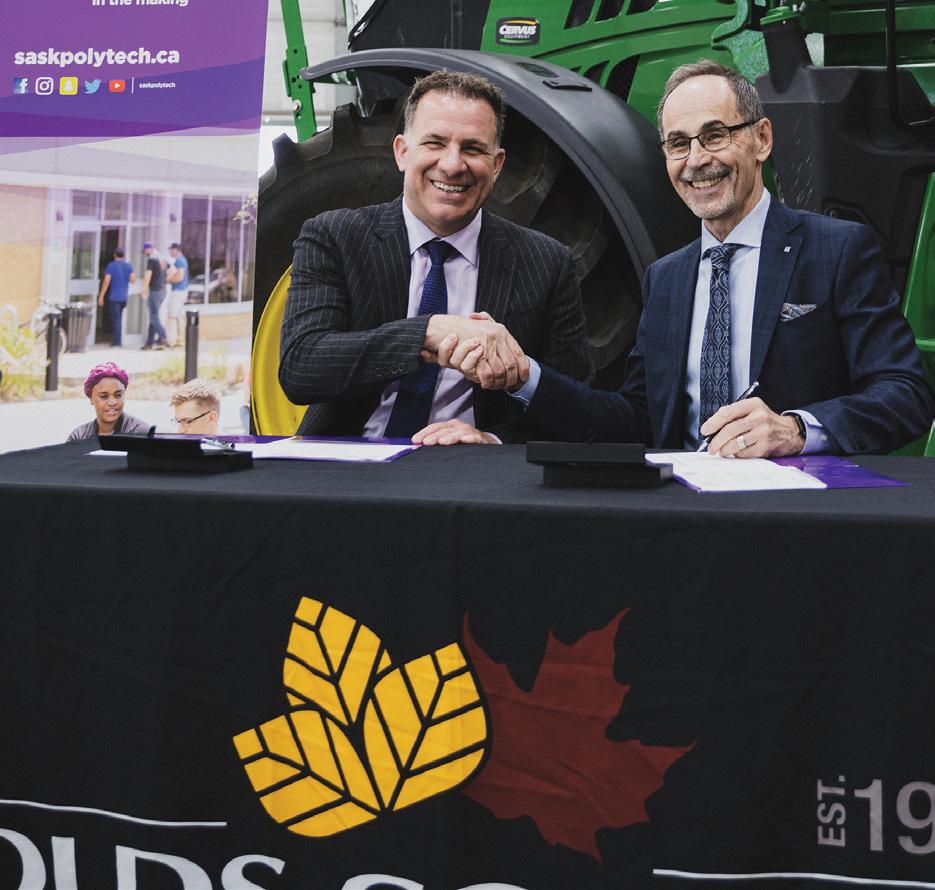
Olds College is proud to be listed as one of Canada’s Top 50 Research Colleges in 2021 according to Research Infosource Inc.
Olds College is one of five Alberta colleges that made the national list, and was also ranked in the top 10 of small size colleges for number of research partnerships and number of completed research projects.

The Producer Panel at Olds College is a critical partnership that connects academics, research and innovation back to the farmers, ranchers and producers they are ultimately serving. Producers from crop and livestock backgrounds in Alberta and Saskatchewan began meeting in 2021 to discuss and provide feedback on the applied research being done at OCCI to ensure it’s applicable and useful for producers.
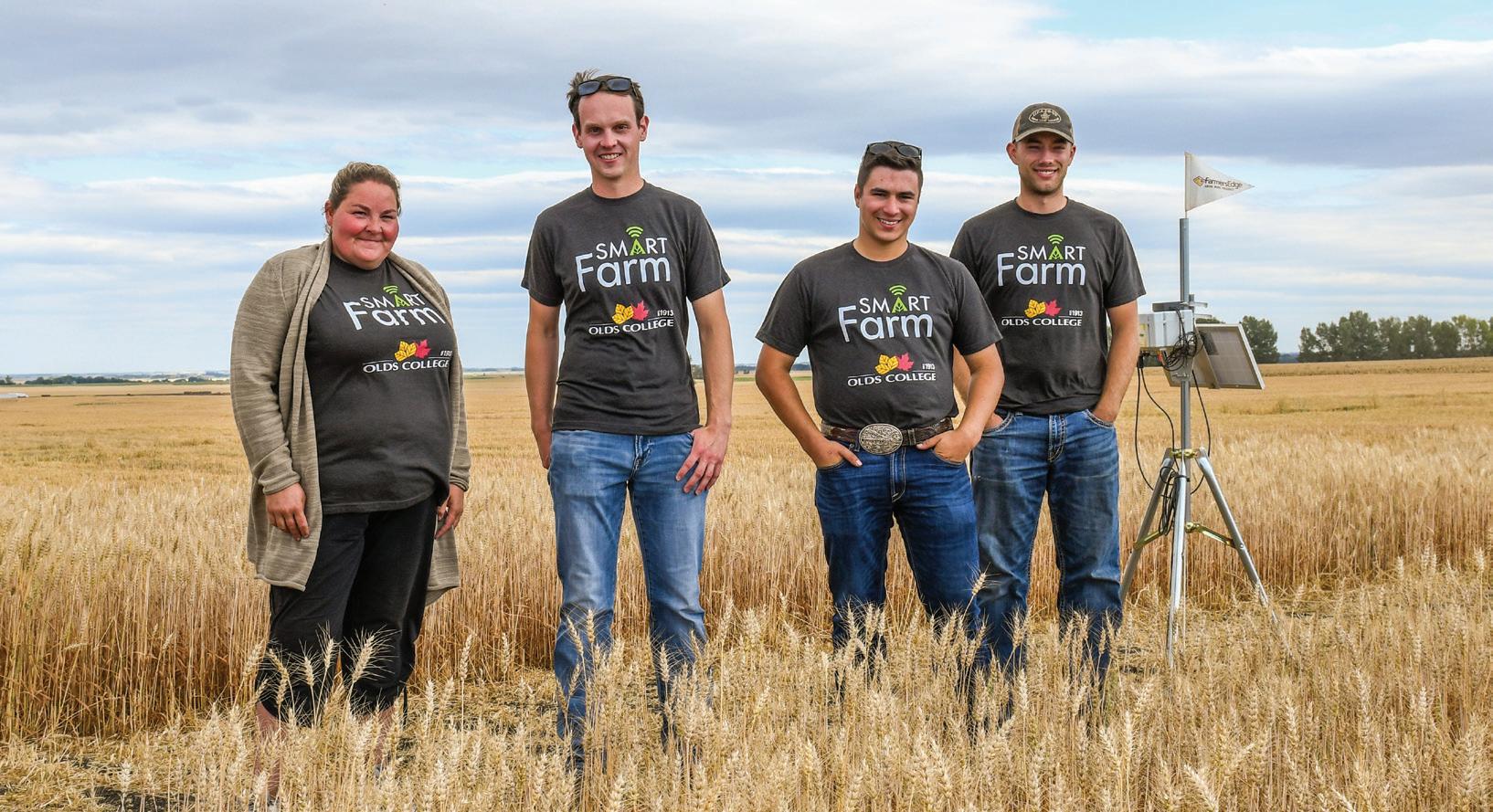
The Pan-Canadian Smart Farm Network — led by Olds College Smart Farm — is a network of Smart Farms committed to sharing data and expertise that will help farmers, industry and creators better understand, use and develop smart agricultural technologies. With funding from the Canadian Agri-Food Automation and Intelligence Network (CAAIN), the network also includes Glacier FarmMedia Discovery Farm located at Langham, Saskatchewan, and the Lakeland College Student-Managed Farm — Powered by New Holland at Lakeland’s Vermilion campus in eastern Alberta.
The overall goal of the Pan-Canadian Smart Farm Network is to build a collaborative framework among Canada’s Smart Farm initiatives for sharing of data and expertise to help farmers, industry, and technology developers better understand, utilize, and develop smart agriculture technologies and systems. These technologies and systems will help producers manage their risk of production to improve the productivity and sustainability of their farms.
The latest project for the network is Comparisons of In-Field MicroClimate Variability and External Weather Stations. This project is comparing data from in-field to out of boundary stations at the three network sites, and evaluating disease modeling via disease scouting. This will provide producers with improved accuracy of localized weather data to make informed farm management decisions.
Contact Olds College Centre for Innovation to find out more about the Pan-Canadian Smart Farm Network or inquire about joining the network.
Olds College Centre for Innovation (OCCI) is the applied research division of Olds College of Agriculture & Technology with a focus on agriculture and smart ag technology.
Industry partners connect with OCCI for support in the development and testing of innovative products in core areas: crop production, livestock production, environmental stewardship, cereal breeding and technology integration. These focus areas align with infrastructure at the College, available expertise and gaps identified by the agriculture sector.
The Smart Farm was built to support start-up development, validation, scaling and demonstration of agriculture technologies and practices. Olds College is connected with Alberta Innovates, the Central Alberta Regional Innovation Network (CARIN), SVG Thrive and UCeed with the goals of:

•
Encouraging innovation, creating and sustaining a healthy economy, and solving problems within the agriculture industry.
• Supporting businesses by guiding them to the right partners through Olds College networks of businesses and organizations throughout Alberta and Canada.
•
Providing training and resources to developers to help them market their products effectively.
Since 2018, OCCI has had discussions with 185 organizations looking to engage with the College — resulting in very high success rates. To date, over 100 organizations have engaged on a project with OCCI, and a large percentage of those include small and medium-sized enterprises (SMEs). Many of these projects are Alberta-based and have
significant relevance and value to local and regional producers.
OCCI incorporates its applied research activities into work-integrated learning opportunities for students, and focuses on practical, industry-driven research that can be easily implemented by the agriculture industry.
engaged on a project
(53%) Alberta-based
Alberta-based
SMEs (68%) engaged on a project are actively engaged on a project for 2022 (63 of which are SMEs)
OCCI incorporates its applied research activities into work-integrated learning opportunities for students, and focuses on practical, industry-driven research that can be easily implemented by the agriculture industry.
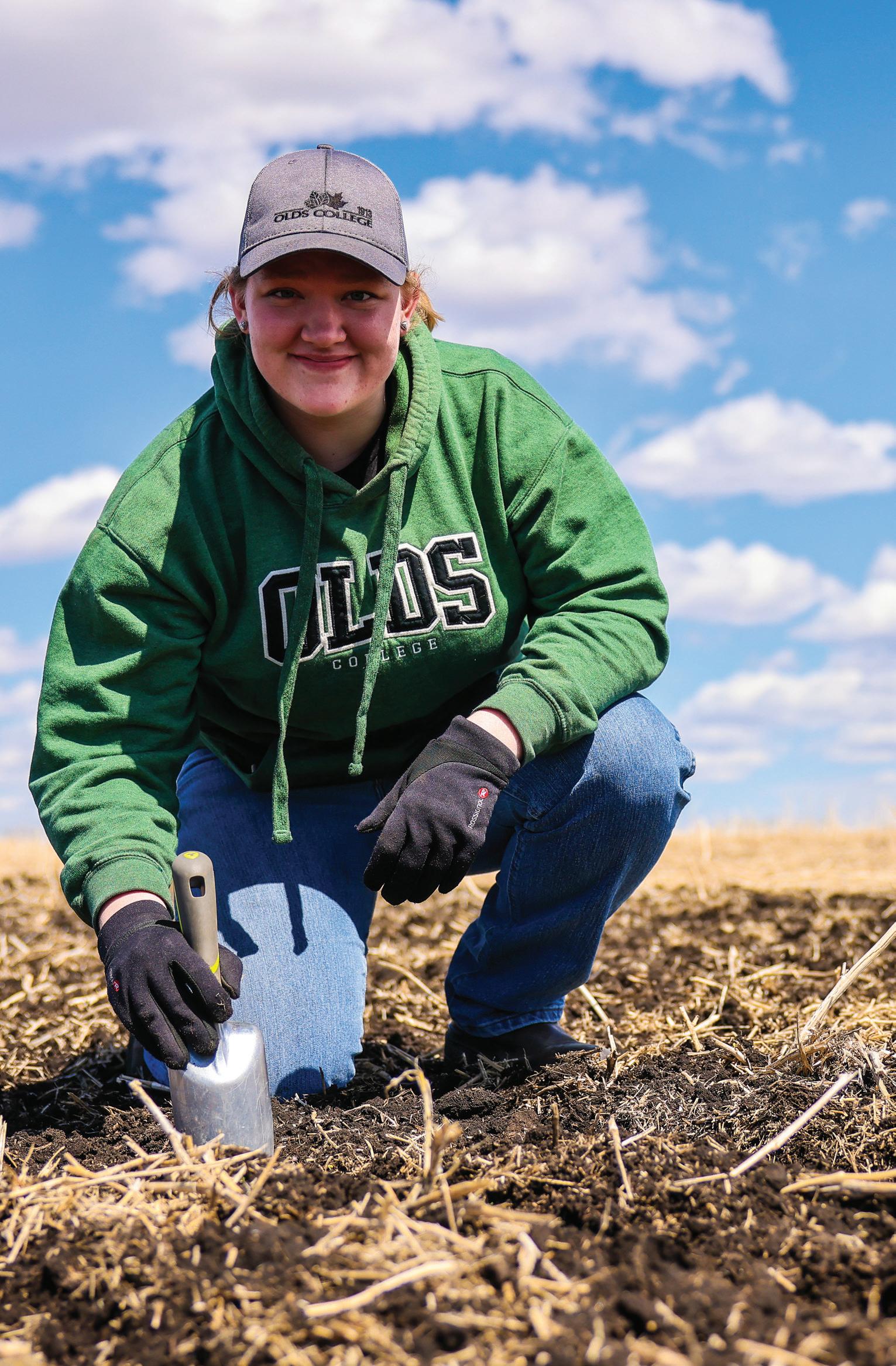
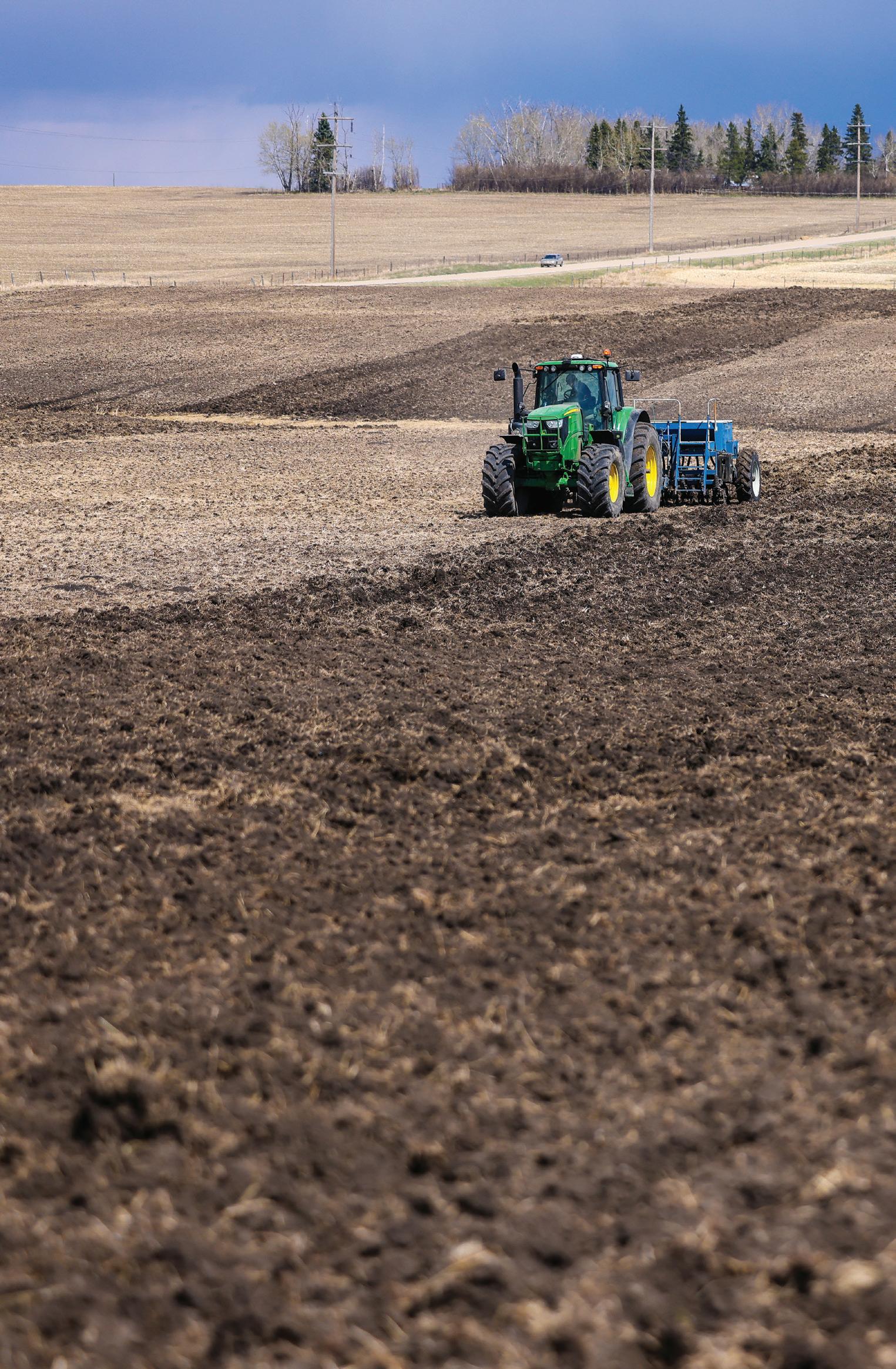
In 2021, the crop research team worked on 25 projects that strive to meet key research goals.
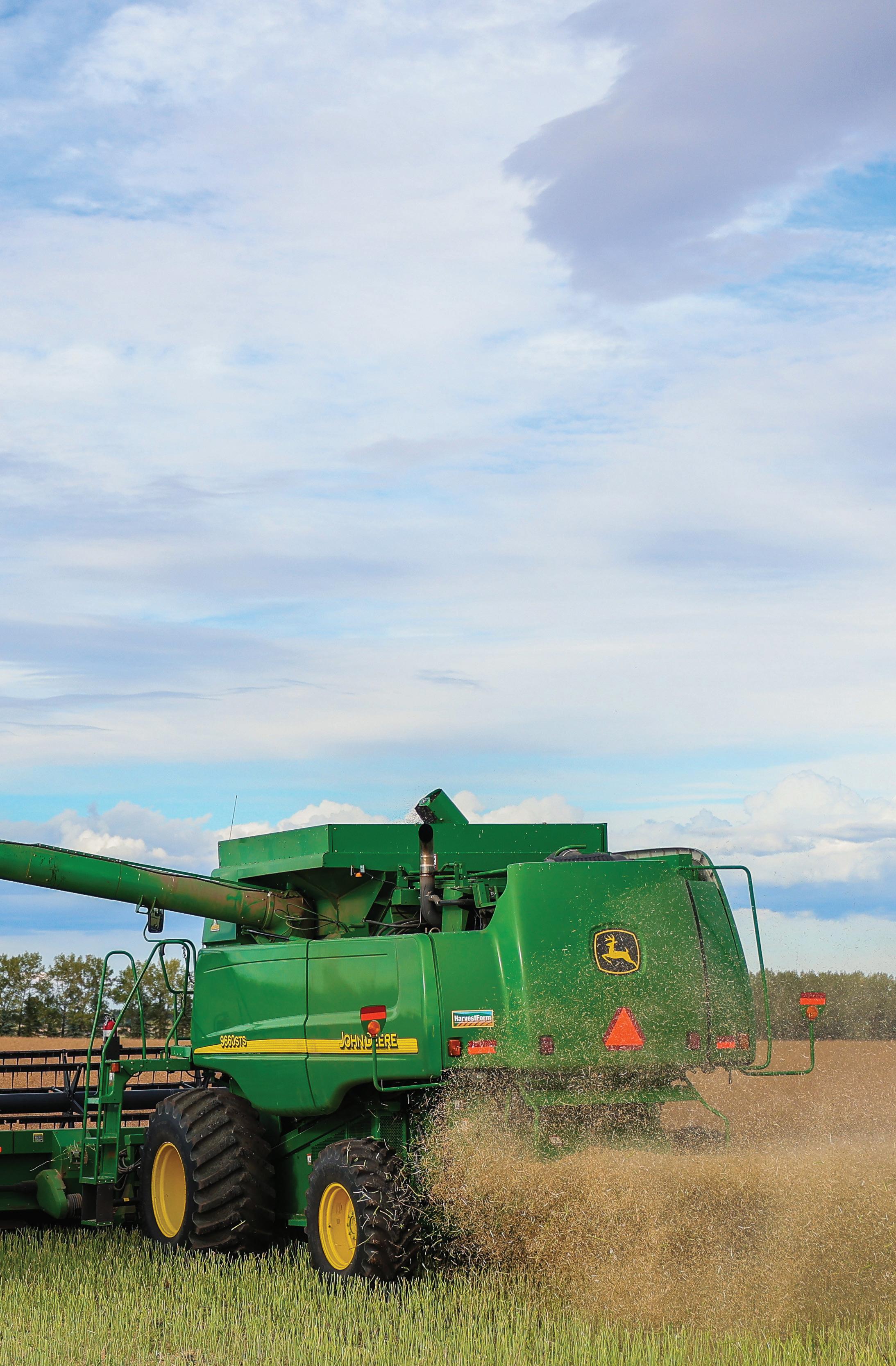
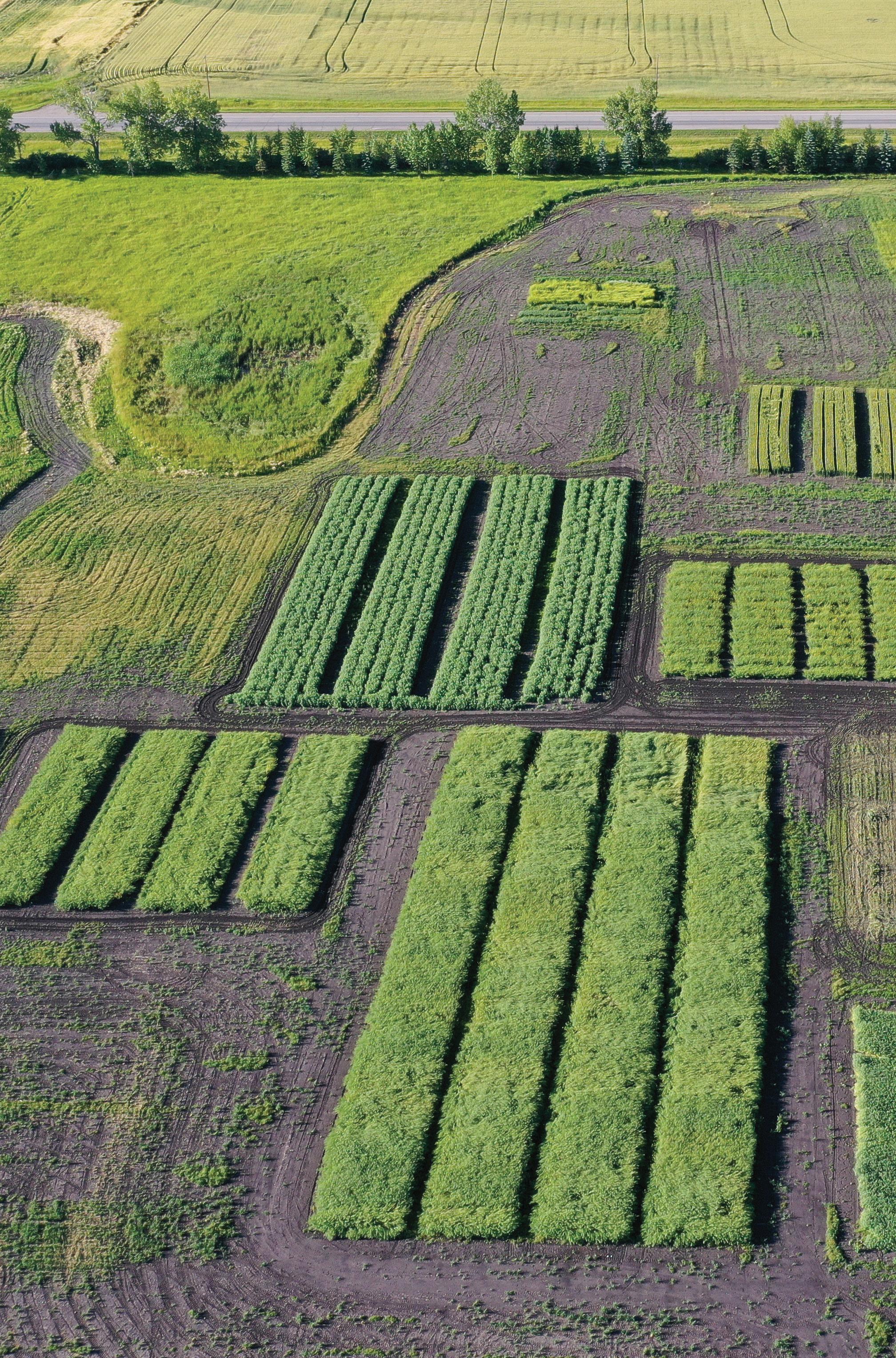
With 3,600 acres of farmland, the Olds College of Agriculture & Technology crop research team performs in-field crop research with small plot trials and full-field commercial scale investigations.
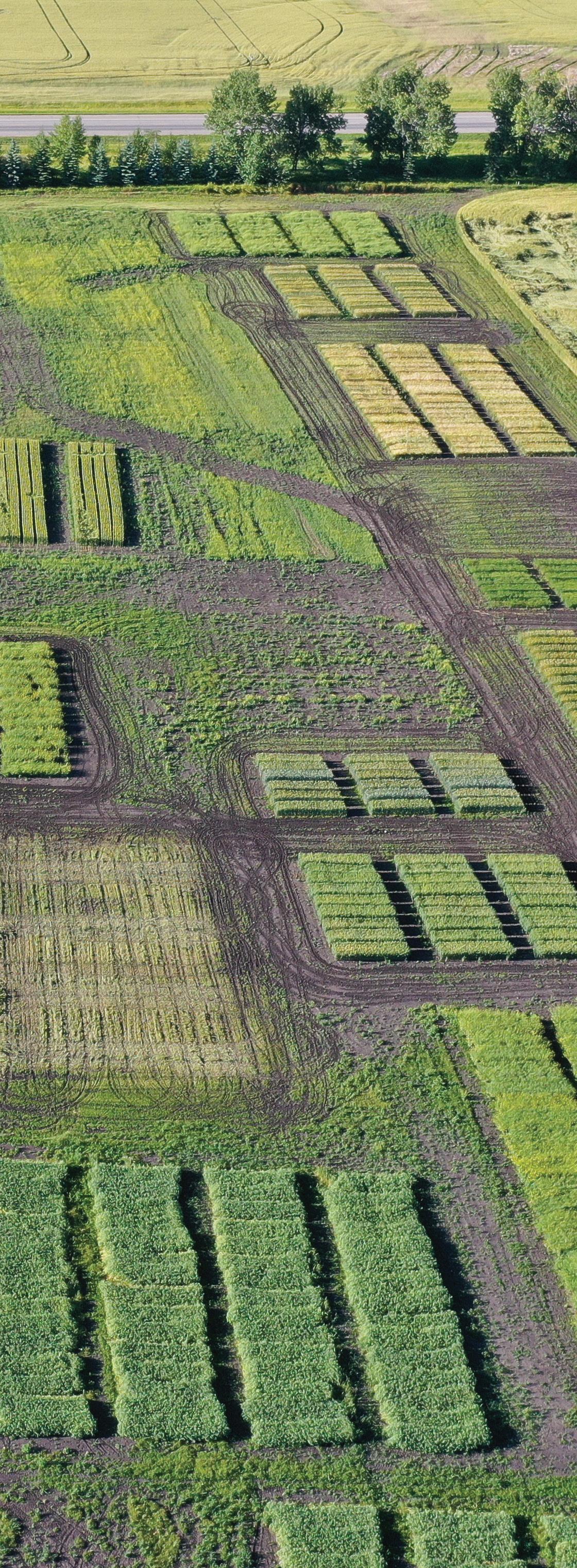
The key research goals for this group are to:
• Develop and test ways to improve agronomic practices.
• Enhance yields, while consuming fewer resources.
• Transition to a climate-resilient agriculture economy.
In 2021, the crop research team worked on 25 projects that strive to meet these goals. For the first time in Canada, optical spray technology was tested at farm level — in replicated field trials — and achieved strong results with significant reductions and efficiencies in the chemical amount application. Funding partners for this project include Western Grains Research Foundation and Alberta Innovates.
An ongoing project with Ducks Unlimited Canada on enhanced yields in winter wheat looks at improving profitability and suitability for growing conditions in central Alberta. The results were promising — the crop seemed to benefit from the head start over the comparison spring wheat crop and it didn’t require spraying herbicide during the first year of testing. Even early grazing by deer didn’t seem to impact the health of the crop.
Over the last three years, the team has been testing fall-seeded rye with great success. The main objective was looking at winter survivability, winter kill, disease resistance and yield. The findings are very encouraging and should provide a good option for cereal growers — especially during the drought prone years.
Another ongoing survey funded by the Alberta Wheat Commission is looking into the prevalence of disease and pests in cereal fields. For the coming year, the focus will be on root lesion nematodes and a possible spatial correlation with wire worm infestations. In addition, projects are underway to test beneficial nematode species as biological control for canola insect pests and understand if they can be an important component of integrated pest management.
An Agriculture and Agri-Food Canada project with funding from the Canadian Canola Council looked at nitrogen use and efficiency, application rates, and other factors that impact the environmental footprint of this crucial crop.
Contract research is also part of the work being undertaken each year. Companies like Nufarm, FMC, Brett Young and Adama put their products and hybrid seed to the test using the extensive resources available at Olds College and the Smart Farm.
As with all the work being done on the Smart Farm, the crop research team delivers results that can be applied to real farms to meet the goals of efficiency, profitability and sustainability.
The TACLP allows innovators and businesses the opportunity to evaluate proprietary concepts, technologies and advances for the technological needs of the livestock sector.
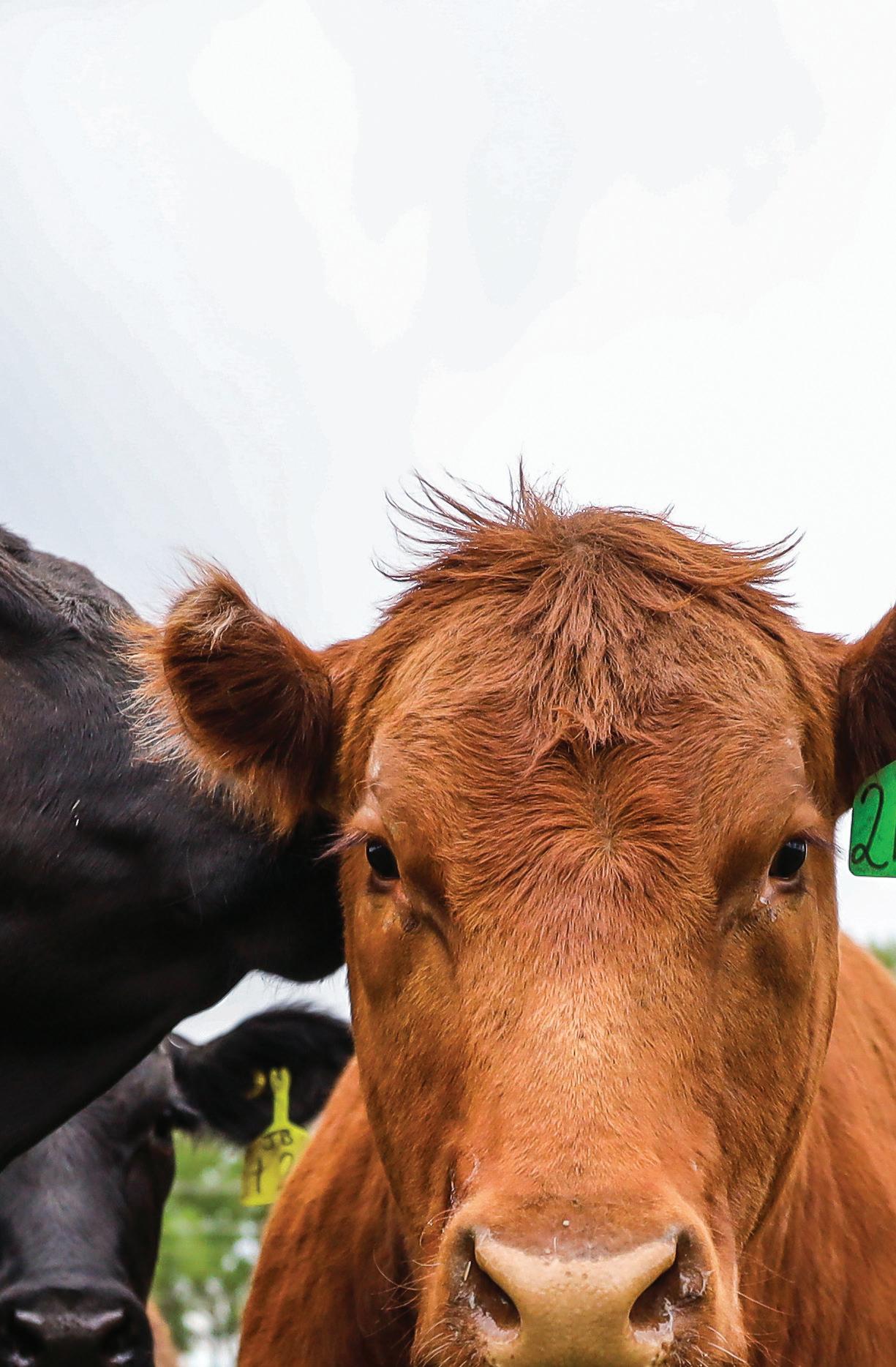
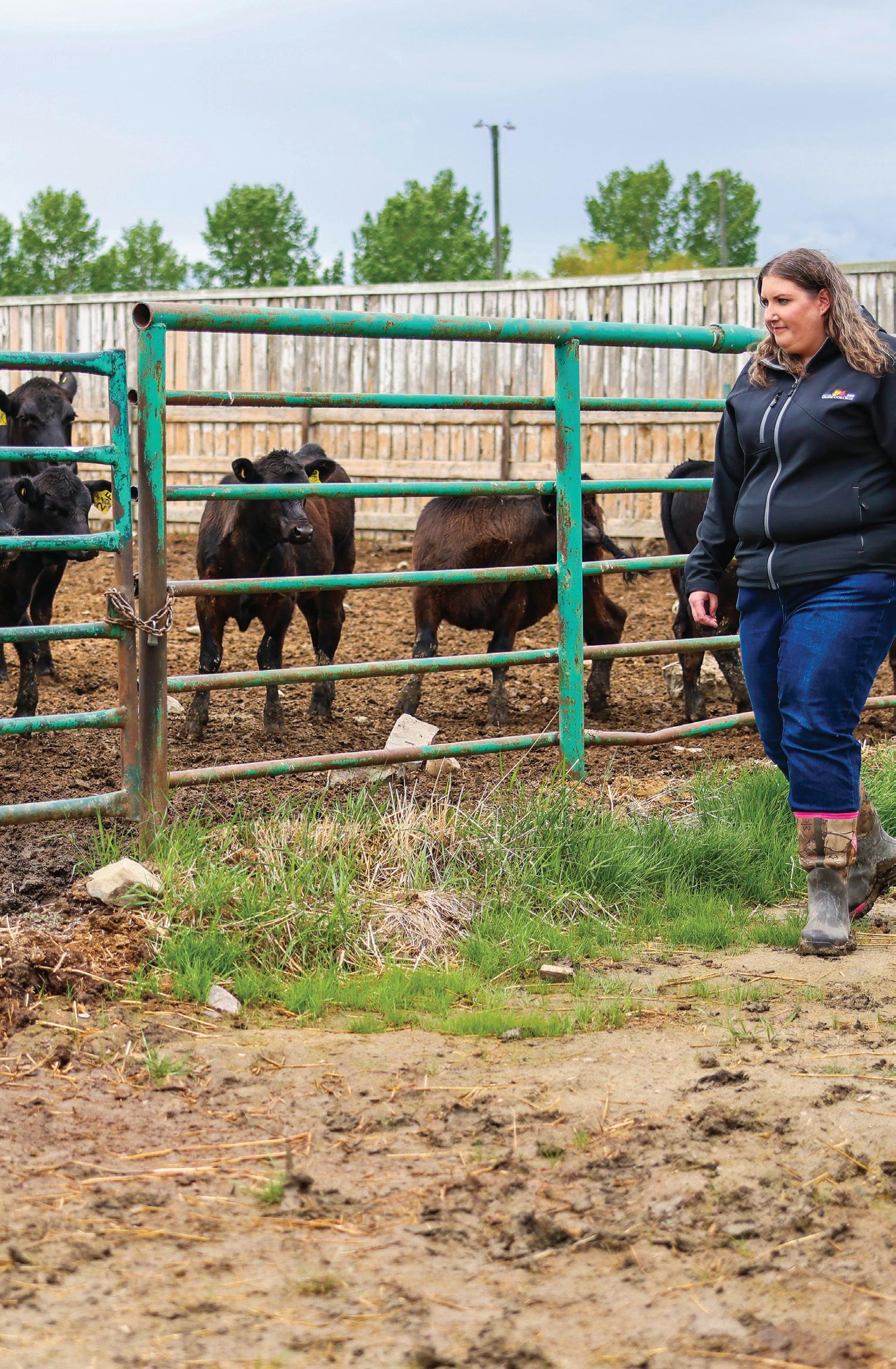
The Technology Access Centre for Livestock Production (TACLP) at Olds College of Agriculture & Technology is an important resource for the livestock community. The facilities and assets of the TACLP — including a commercial cattle herd and 1,000-head capacity feedlot — can be utilized to demonstrate and advance the use of technology to improve production efficiency, animal health and welfare, and enhance environmental sustainability.
Just a few highlights of projects from the past year demonstrate the commitment of the livestock research team to the goals of efficiency, environmental sustainability and animal welfare.
Alberta Innovates provided the funding for a study looking at continuous versus rotational grazing. Smart technologies were employed to monitor rangeland health assessments, animals, resources such as fence lines and watering systems, and the impact of crop cocktails on soil health and biodiversity.

Looking at ways to reduce the impact of feedlot retention ponds has led to innovative solutions. Floating Island Technology for Water Remediation is a multi-year study that is seeing significant results. Using native wetland plants and floating island technology to treat feedlot runoff water could effectively improve water quality for irrigation or livestock consumption by removing excess nutrients, heavy metals, and other contaminants (as well as minimizing the presence of algae blooms).
Allowing native wetland plants to do the work could save producers the high costs for chemicals and other technology that might otherwise be used to remediate feedlot run-off.
Animal health and welfare studies are plentiful at the TACLP. Last year, a pre-conditioning study in collaboration with the University of Calgary looked at the impacts of various weaning techniques to better prepare calves for the feedlot. The goal was to reduce the necessity for preventative treatments when they arrive at the feedlot, reducing antimicrobial use overall. Factors such as performance, growth, activity, behaviour, transition to bunk feeding and health checks were compared over 40 days.
The Heifer Acclimation Project looked at reducing the stress of handling to improve reproduction rates. With partner Neilson Cattle Development, the TACLP worked on acclimating heifers to the process prior to the breeding season. The acclimated heifers were compared with a group that was not acclimated, and then reproductive performance, ease of handling and physiological indicators of stress (primarily cortisol levels) were evaluated. The preliminary results were promising — the heifers that received the acclimation training had lower cortisol levels and improved pregnancy rates compared to the non-acclimated group.
Another collaboration with Neilson Cattle Development was a study investigating different calf weaning methods. The health of calves was closely monitored after nose flap, fenceline and abrupt weaning methods were employed. Technology was used to measure activity and other performance criteria in the weeks and months following weaning.
Thanks to the funding support of the Natural Sciences and Engineering Research Council of Canada (NSERC), the TACLP can provide access to every step in the production cycle — from seedstock to feedlot. The TACLP allows innovators and businesses the opportunity to evaluate proprietary concepts, technologies and advances for the technological needs of the livestock sector.
The facilities and assets of the TACLP can be utilized to demonstrate and advance the use of technology to improve production efficiency, animal health and welfare, and enhance environmental sustainability.
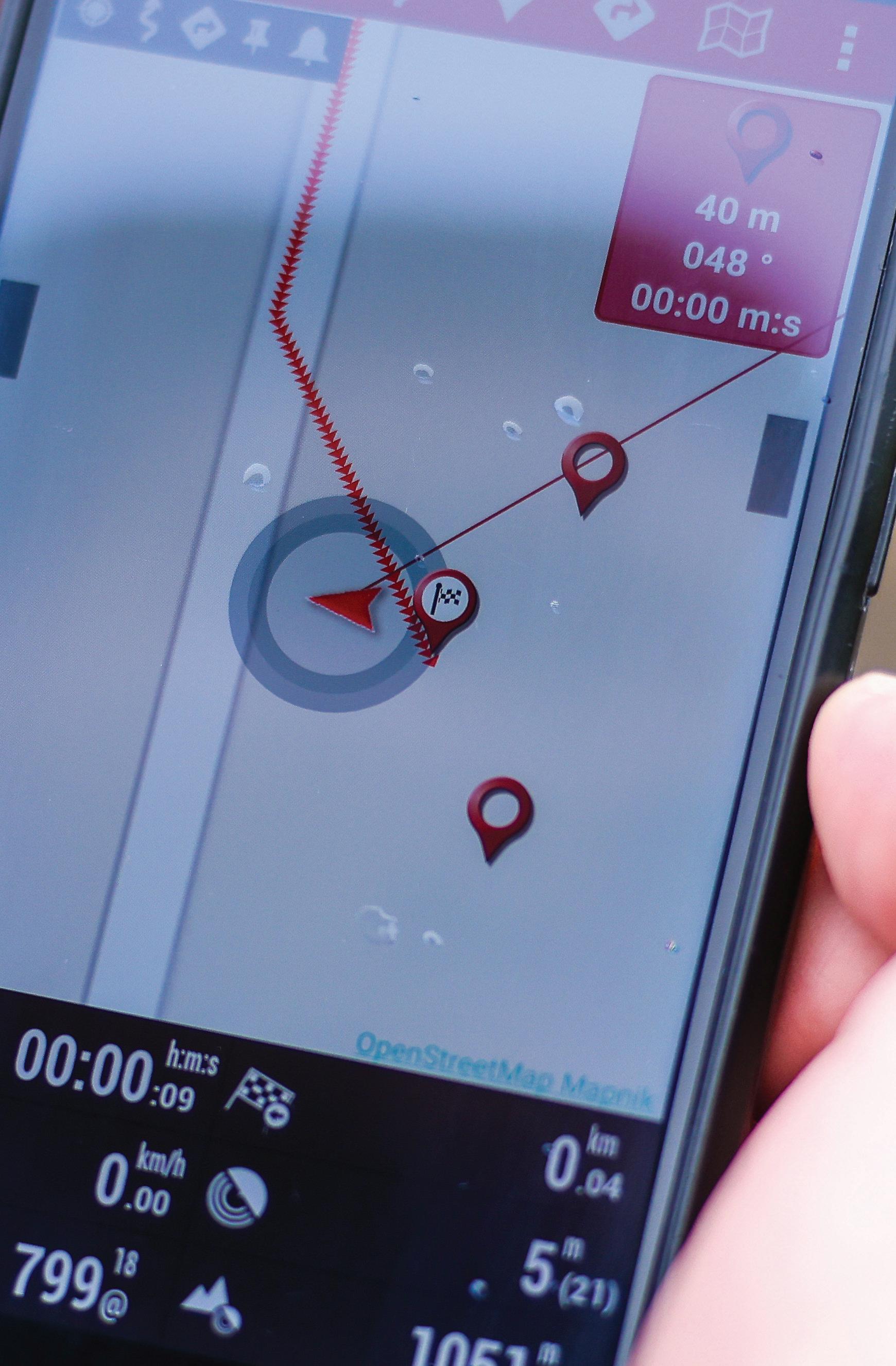
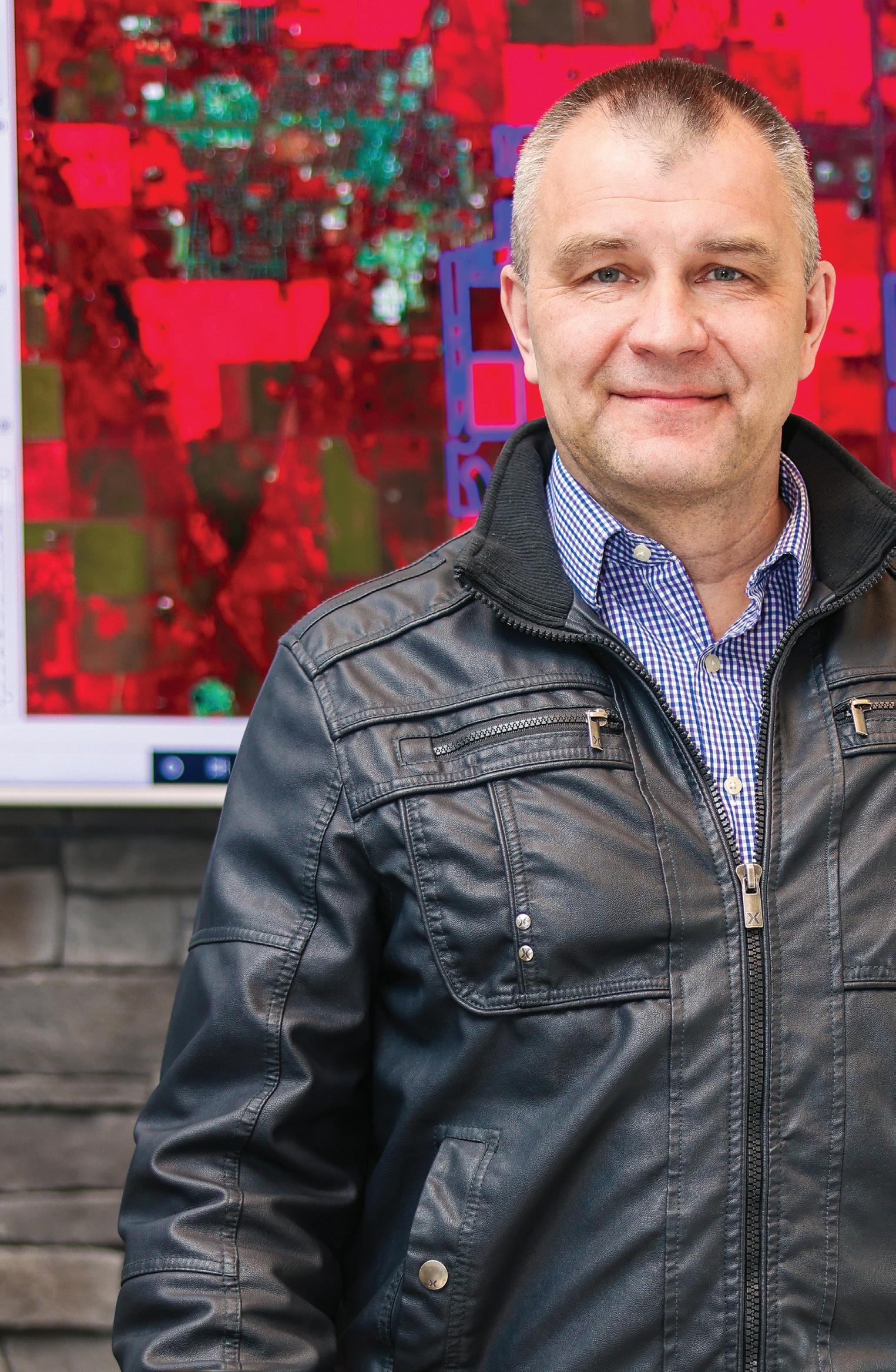
Ag digitalization represents one of the greatest opportunities — and one of the largest challenges — for agriculture producers. Gathering the right amount of the right information, and then having a way to use it to enhance farming decisions, requires technology that producers can easily understand and manage.
Olds College of Agriculture & Technology engaged Dr. Alex Melnitchouck, Chief Technology Officer, to develop a Digital Ag Strategy that provides guidance for the collection, integration and utilization of agricultural data for evidence-based decision making. This strategy also supports the research and work on the Smart Farm, along with industry partners and the College as a whole.
When the Digital Ag program began three years ago, the College brought the most advanced digital technologies from around the world and applied them to the Smart Farm. These technologies continue to provide training for students, and are used for applied research and the development of new, next generation technologies. More information helps to understand fields better, and these tools enable the collection of millions of data points from individual fields on the Smart Farm.
The HyperLayer Data Concept is being used to build an extensive look at the Smart Farm. It centers around compiling topographical data, detailed soil nutrient and moisture mapping, multispectral and hyperspectral imagery, yield data, and other layers of information to assist in machine learning for easy analysis, data extraction, and the building of next-generation analytical algorithms.
The predictive algorithms that are developed with this information will be used on-farm to create significant environmental benefits — such as reduced fertilizer and input use, as well as water and other environmental benefits.
A number of projects are underway, and the team is now building their own platform to store and process data. They’re also building machine learning algorithms for analyzing soil organic matter. Partner organizations such as CAAIN, TELUS Agriculture, xarvio/BASF, FarmVu, VizworX and 4S Analytics all see the opportunities of a robust digital agriculture program. Dr. Melnitchouck can’t stress how critical these thousands of data points are for the development of machine learning and new technologies. “It’s important to realize how fundamental and foundational this concept is. When you build a house, you start with the basement. The HyperLayer Concept is the basement for the whole digital world at Olds College.”

Olds College of Agriculture & Technology is excited to partner with Edmonton-based Wyvern, a space data company. The collaboration with Wyvern is an opportunity to see what cutting-edge satellite technology could mean for the next chapter in digital innovation for agriculture.
Wyvern’s DragonEye satellite will deliver high-resolution hyperspectral imagery from high-quality camera technology.
Olds College is working with Wyvern and several other partners on this three-year project, and expect the data collected from the Smart Farm to provide solutions related to crop input efficiencies and improved yields.
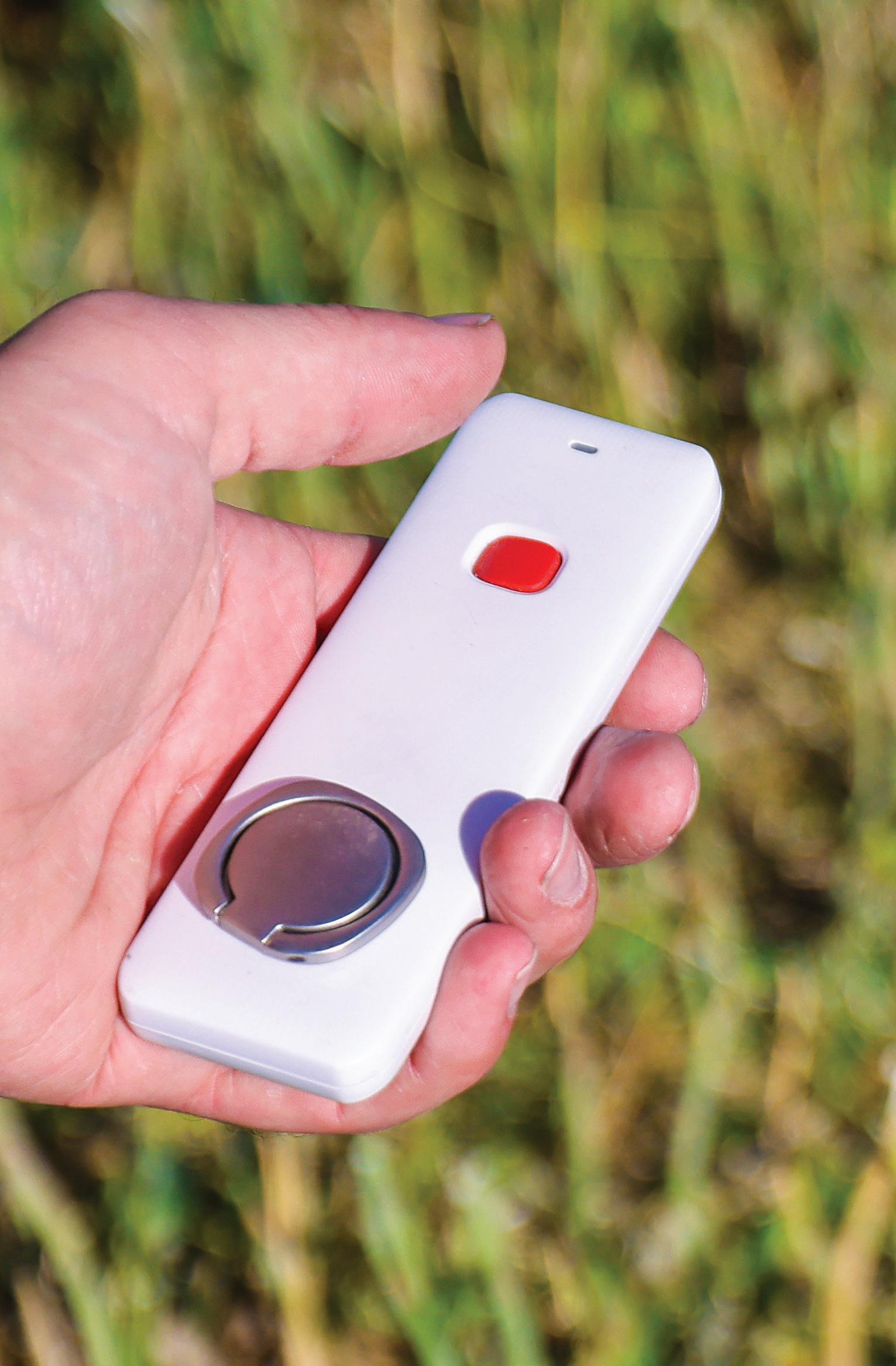
The Smart Ag Applied Research team is also contracted by companies who need support in validating a recently developed innovative product or technology.

The Smart Ag Applied Research team’s mandate is to evaluate, demonstrate and validate agriculture technologies, tools and practices. This provides manufacturers and users with information on functionality, accuracy and value of technologies — particularly in Alberta stubble, soil and climate conditions.
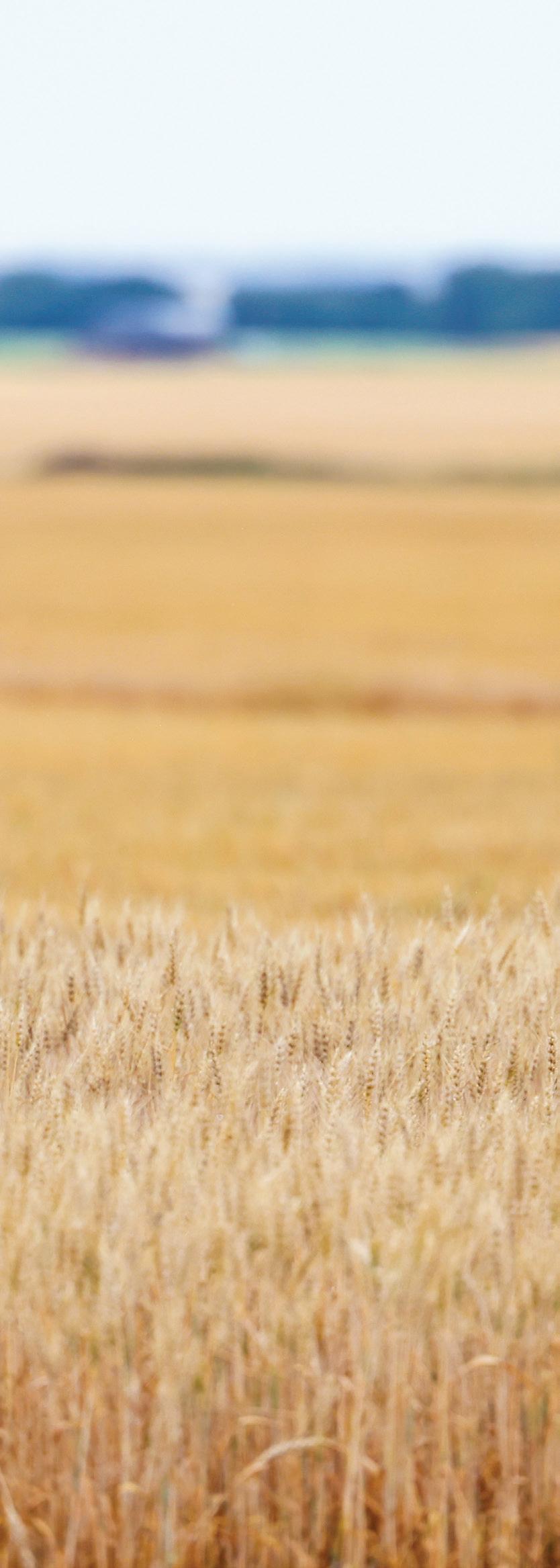
Will this product or service save producers time or money, improve efficiency, or reduce environmental impact? The research team is working to answer questions like these with industry-driven applied research related to smart ag technologies such as application maps using satellite imagery, in-bin monitoring systems, soil moisture probes and weather stations.
In 2021, several projects provided interesting results and the continued opportunity to build new partnerships and programs — especially with continued support from the Natural Sciences and Engineering Research Council of Canada (NSERC), Prairies Economic Development Canada, and Alberta Innovates.
The team worked on a proof of concept with Alberta Financial Services Corporation (AFSC) to see if using drone imagery in hail damaged fields can assist the assessment process. Promising initial results showed that drones could provide a good overview of the extent of damage. The mutually positive experience executing this project helped turn the working relationship between AFSC and the Smart Farm into a longer-term partnership. In the coming year, the team will be visiting fields after real hailstorms occur to see if the drone can accurately identify damage, and if this could be a tool that might help adjusters speed up the assessment process.
Weather station comparisons helped audit the data collected, options for add-on utilities, user platforms, and pricing between numerous stations and technologies. This comparison allows producers to better compare “apples to apples” when making choices and identify the equipment that would work best for their farms. The team worked with several different disease models learning about functionality and ease of interpreting the information; however, disease risk was low to non-existent during the 2021 growing season which provided limited learnings. The research team is working with TELUS Agriculture on an interesting area — variable rate technology. At what level of variability does it pay to invest in variable rate technology? Is it worth investing if you can reduce 10 per cent of fertilizer used on a third of your acres? The measures of success include savings, improved yield and reduced environmental footprint as the key variables impacting the return on investment. So far, results indicate that if producers can capitalize on the reduction in environmental footprint, variable rate technology should be included as part of normal operations on the farm.
The Smart Ag Applied Research team is also contracted by companies who need support in validating a recently developed innovative product or technology. The Spornado Sampler, a wind trap that can collect airborne spores to identify possible disease pressure in the field, is a current project example. The team is working with Spornado to evaluate how the product will assist producers in making good fungicide application decisions.
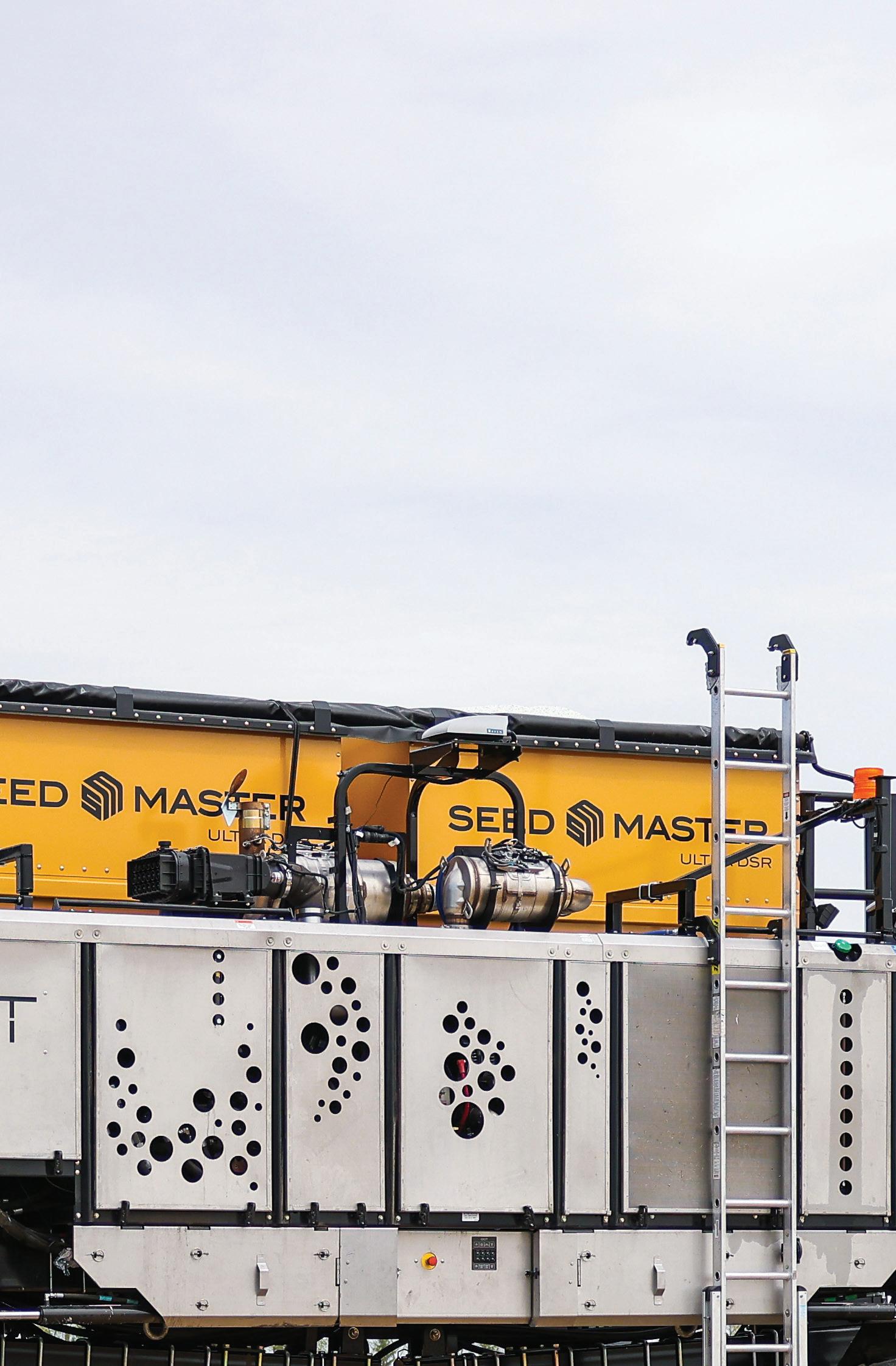
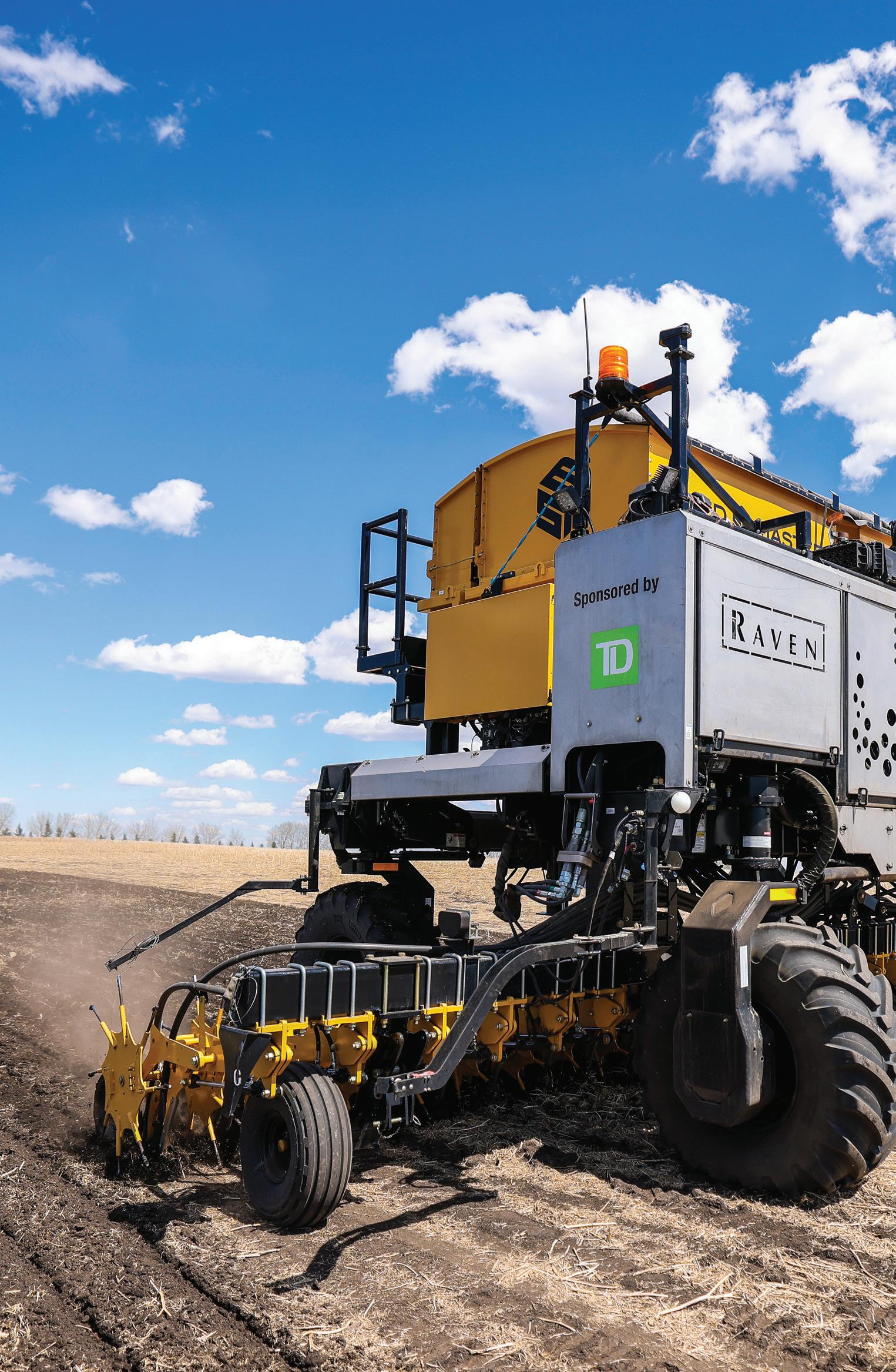
The Raven OMNiPOWER™ platform represents a significant first-step towards autonomy applied to agricultural operations. Olds College of Agriculture & Technology is conducting future-focused research on the evaluation and improvement of economic, environmental, and logistical benefits of autonomous agricultural equipment for broad acre crop production.
The Olds College Smart Farm made substantial progress in two years of autonomous operations with OMNiPOWER due to a dedicated and expanded team (which includes current and former Olds College students), increased data capture with new electronic data collection technology, and increased “hands-off” time.
During the 2021 growing season, the team collected data from autonomous agriculture equipment on a total of 60 missions seeding, spraying, spreading and training across 5,408 acres in partnership with Carlson Ag, Gatez Farms Ltd., and Pattison Farms in Alberta and Saskatchewan.
The Smart Farm now uses two methods of data capture for OMNiPOWER: observational data from the team in the field and real-time digital data from Somat-eDAQ — a device installed on OMNiPOWER which electronically collects location specific data (GPS) and equipment data (CAN bus). This data comes in at a rate of two times a second including starts, stops, distance travelled and fuel consumption rates.
While OMNiPOWER operates on its own after a mission is programmed, it requires supervised autonomy which means it must stay within line-of-sight of the team. Some of the most important information comes when the unit stops unexpectedly in the field. The team maintains a close partnership with Raven Industries to address technical issues if any arise. One identified issue is inconsistent cellular coverage which is being closely evaluated.
The team is confident stating that autonomous technology is available and mature enough for broad acre farming.
The confidence gained from two years of operations has led to the Smart Farm relying on OMNiPOWER to perform seeding, spraying and spreading duties in the 2022 growing season.

At the beginning of June 2022, the team calculated the missions and acres completed for OMNiPOWER so far this growing season. OMNiPOWER had already completed 21 missions, spreaded 1,115 acres, seeded over 635 acres, and sprayed over 325 acres. The team looks forward to compiling the grand totals after harvest.
Team members are also performing comparable autonomous data collection in the 2022 growing season with the Somat-eDAQ. The device is being used in conventional equipment to collect data, such as measuring field efficiency and route efficiency, that can be compared to OMNiPOWER for evaluating autonomous versus conventional equipment.
And this might be a first in agricultural history. OMNiPOWER was part of synchronous operations on Antler Valley Farm in May 2022. One operator controlled two seeders: a traditional one (60') and Raven Precision OMNiPOWER (30'). Olds College OMNiPOWER with its SeedMaster DSR 30' Air Seeder implement completed 30 per cent (43 of 142 acres) during a regular seeding mission on Antler Valley Farm to improve efficiency.
Research goals include ways to negate water shortages, cost-effective and efficient methods of water management, and creating ways to promote and enable environmental stewardship.
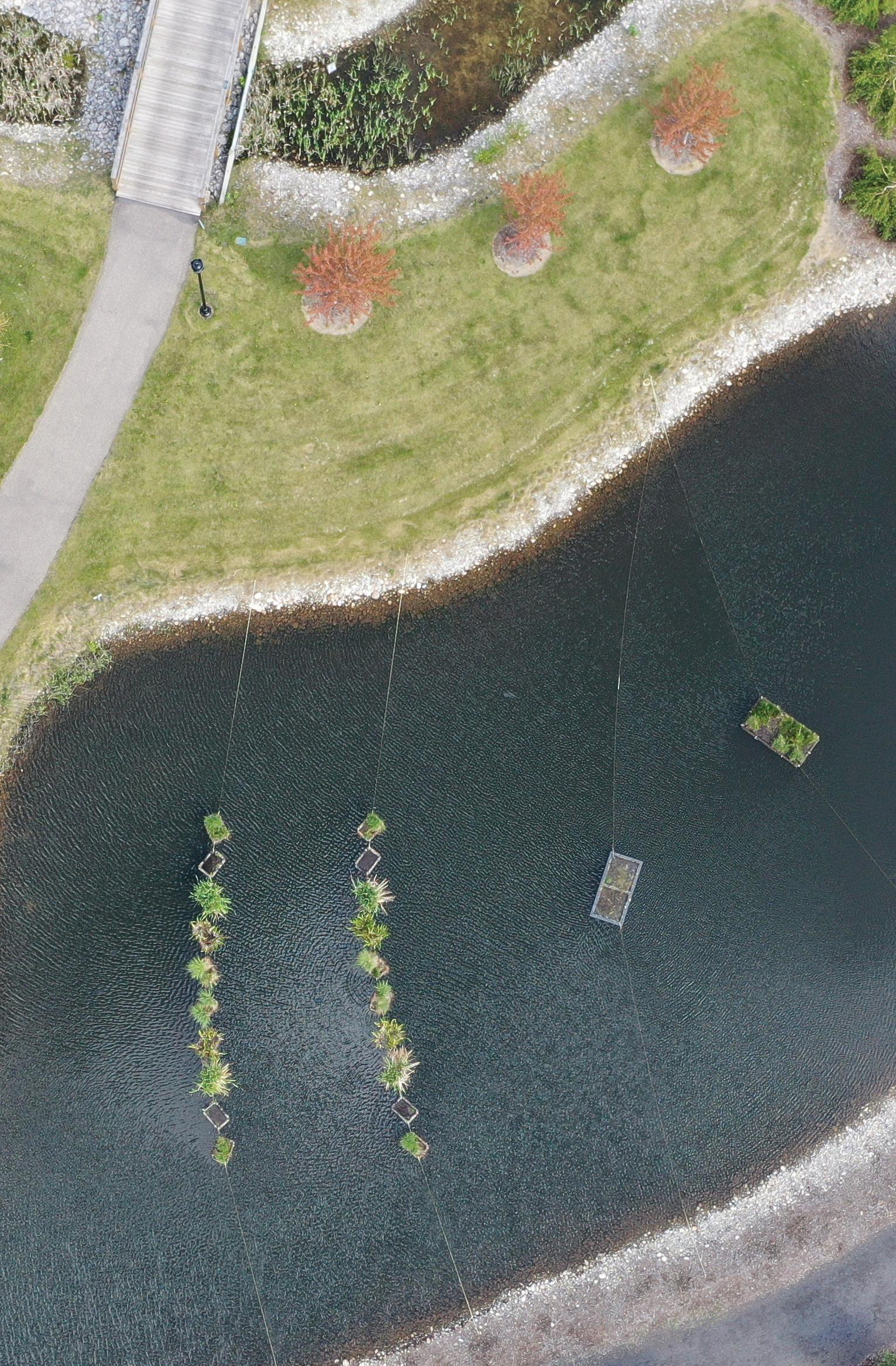
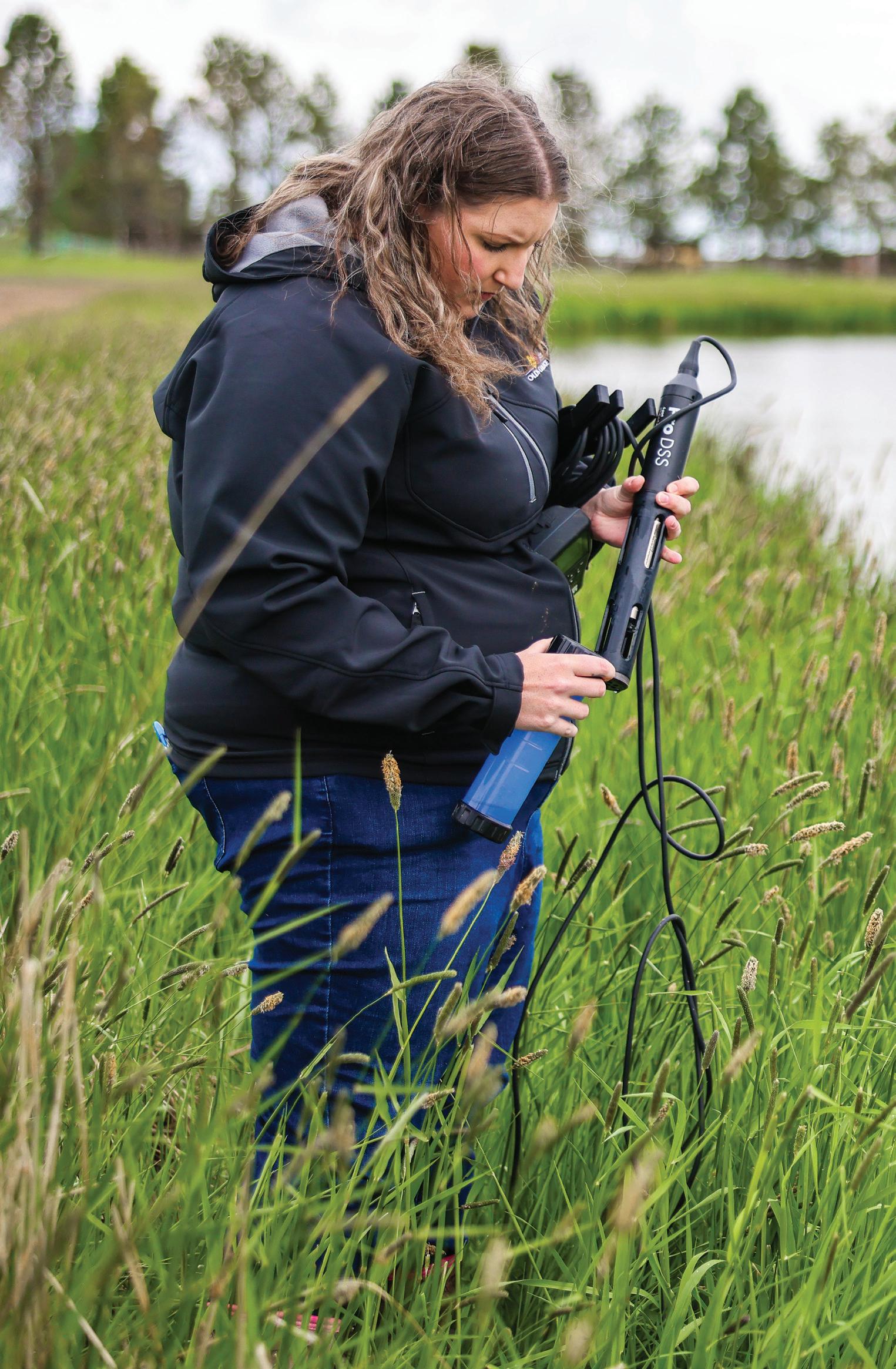
Olds College of Agriculture & Technology is home to a constructed wetlands facility that is dedicated to surface water resource management solutions, applied research and education. Research goals include ways to negate water shortages, cost-effective and efficient methods of water management, and creating ways to promote and enable environmental stewardship.
The most active research work in 2021 was on water resource management. With investments from RDAR, the Alberta Real Estate Foundation, UFA and Highfield Investment Group (HIG), the team at the College has been working on both commercial and agricultural applications for their research.
The Floating Island Research study was initially conducted in the Olds College greenhouses with promising results. Working with a plant species expert provided a valuable resource for plant selection which led to improved water quality. The next step is a three-year water remediation project focused on addressing nutrient run-off in feedlot catch basins at four commercial feedlot sites, including the feedlot at the Smart Farm.
Another interesting water management project is taking place at the High Plains Industrial Park near Balzac, Alberta. Shuttleworth Conservation Park is a constructed wetlands built by HIG, and Olds College has been working with them on this “living lab” since 2017. Technology and other research practices are being used to monitor and manage water quality by the Olds College team.
Other projects in the works are:
• Land management projects looking at studies to improve soil health and mitigate impacts from crop inputs.
• Solar energy work focusing on ways to use alternative energy sources for things like monitoring in remote areas, and their effectiveness as an energy source even in the winter.
• Climate change management work focusing on improved management practices to help reduce the impacts of crop production related to nitrification, air quality, and nutrient use efficiencies.
• Green infrastructure projects focusing on shelterbelt development and plant selection to encourage healthy bees and biodiversity.
Environmental stewardship comes in many forms and plays a role in most of the projects taking place on the Smart Farm. Water management is top of mind across the prairies and around the world, and important research will continue over the next few years.
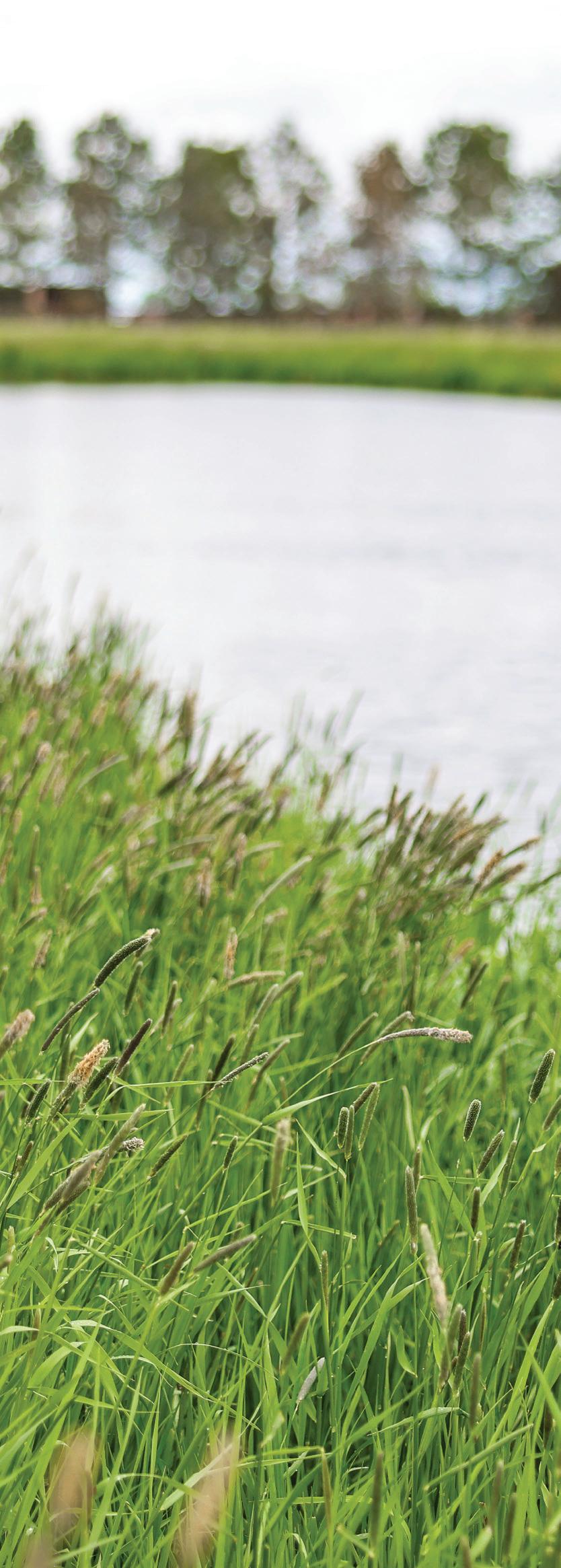

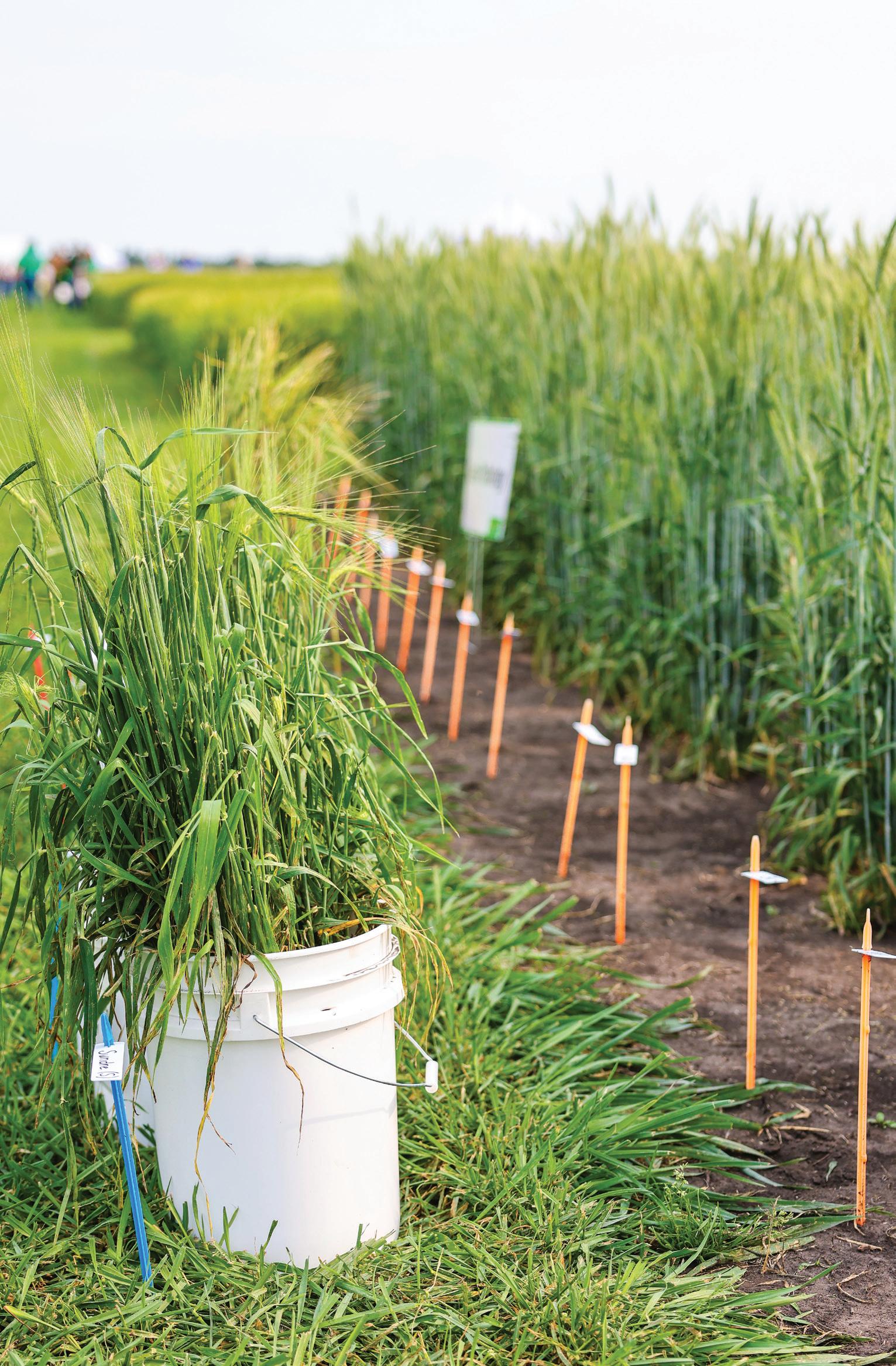
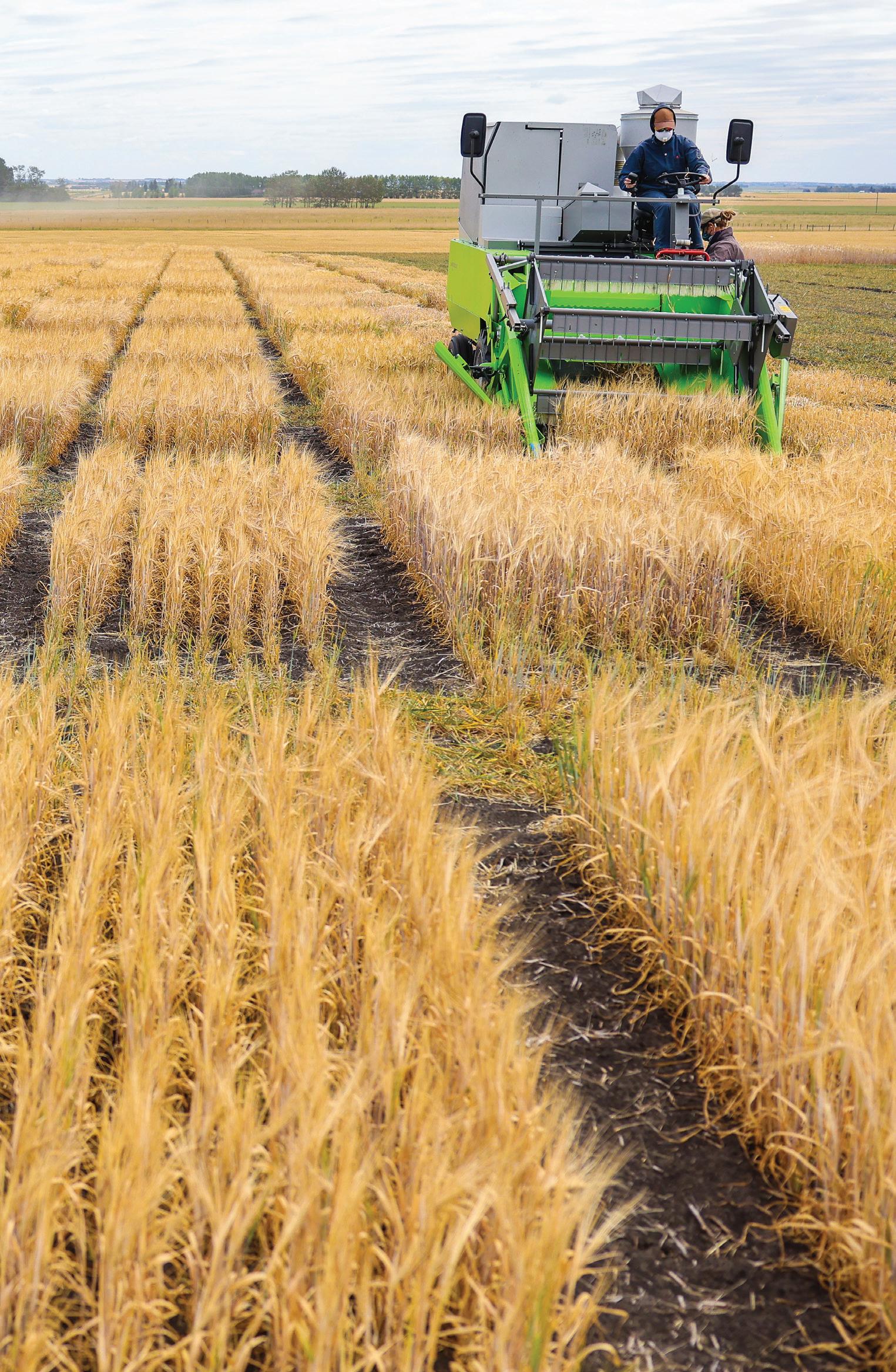
The Field Crop Development Centre (FCDC) has a long history in Alberta dating back to the early 1970s when hog producers were looking for better quality feed — but 2021 saw the start of a new era in cereal breeding as FCDC transitioned to Olds College of Agriculture & Technology.
The world-class research centre boasts 22 dedicated researchers, technicians and staff along with 600 acres and equipment for plot scale trials, and is supported by quality, pathology and biotech labs. In 2021, there were 40,000 plots planted, analyzed and harvested despite the challenging weather. The Centre also collaborates with research institutes in over 30 countries, and has released more than 50 barley and triticale varieties.
Barley and triticale remain FCDC’s primary crops, which ties in well with the College’s Brewmaster program. This past season the brewery created a beer, Lowe Down, for the annual FCDC Field Day using one of its varieties.
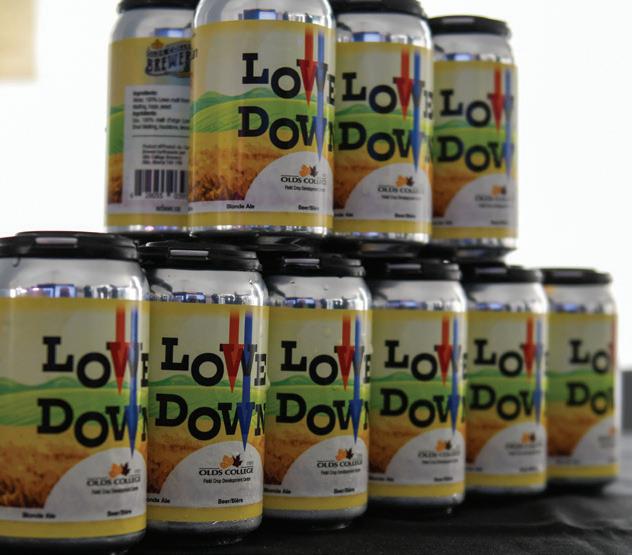
The research centre is based in Lacombe, Alberta; however, FCDC also farms and maintains off-station sites at Olds, Trochu and Morrin. FCDC sent several thousand breeding lines for screening across Western Canada and internationally last year, and continues to use a winter nursery in southern California as well as an indoor growth facility in Lacombe to speed up the advancement of genetic material.
The team at FCDC has been bringing partners together for various projects including the Beef and Cattle Research Council, Alberta Beef Producers, Brewing and Malting Barley Research Institute, Canadian Malting Barley Technical Centre, Rahr Malting as well as a number of seed companies that will eventually be selling varieties.
Agromatic traits such as yield, standability, lodging resistance and disease resistance are primary goals for all three breeding programs. In addition, FCDC aims to improve the nutritional profile for the feed forage cereals with higher digestibility, feed conversion and efficiency. In malting barley — along with the improved agronomic traits — FCDC is seeking enhanced quality traits to meet the demand of the malting, brewing and distilling industry.
The transition of the FCDC from Alberta Agriculture and Forestry to Olds College of Agriculture & Technology in January 2021 allowed those involved to build a strategic plan and define the work to be done going forward.
The FCDC is focused on developing enhanced cereal varieties for feed, forage, malt, food and bio-industrial uses.

To accomplish this, a steering committee identified six strategic drivers:
1. Be externally facing with a measurable impact on the sector.
2. Be market responsive.
3. Expand service delivery.
4. Increase funding through diversification of revenue sources.
5. Create a high-performance organizational culture.
6. Be recognized for scientific expertise and outcomes.
Supporting these drivers, the committee identified activities and objectives as well as measures of success.
The FCDC team will continue to work towards being an industry leader in research and development.
The College’s Brewmaster program created a new beer, Lowe Down, this past season.

Olds College of Agriculture & Technology has an incredible legacy of having taught students about primary agriculture for over 100 years. One of the goals of the Werklund School of Agriculture Technology is to honour that legacy while also remaining relevant and innovative, and providing work-integrated learning experiences across all programs.
The agriculture industry is undergoing a major paradigm shift, requiring not only strong agronomic or animal husbandry skills,
but a good understanding of technology and business. Graduates in the Ag Management program now leave the school well-rounded with training in primary production as well as management, accounting and finance.
The Bachelor of Applied Science in Agribusiness is a prime example of the work-integrated learning commitment made by Olds College. In the program, students receive training in human resources, marketing, applied research, strategic
business management, international marketing, financial management and more — and complete an eight-month directed field study. Students come from all over the world for this program because it provides such a broad base of experiences and opportunities to learn and specialize. Companies are equally impressed with this program as it gives them the opportunity to find interns and new staff that have the training and practical experience they are looking for.
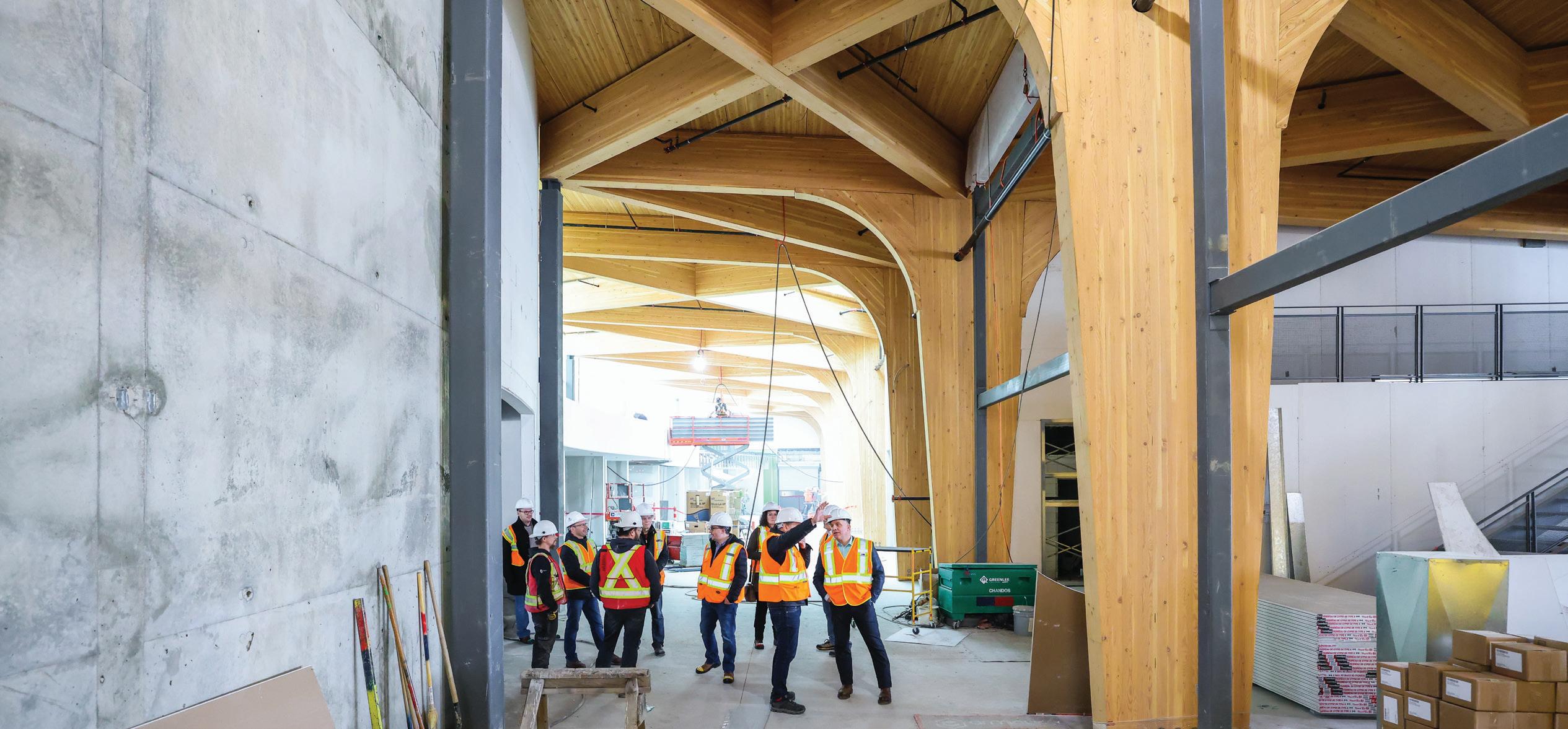
The new home for the Werklund School of Agriculture Technology will be called the Werklund Agriculture and Technology Centre and will be ready for students in the Fall of 2022.
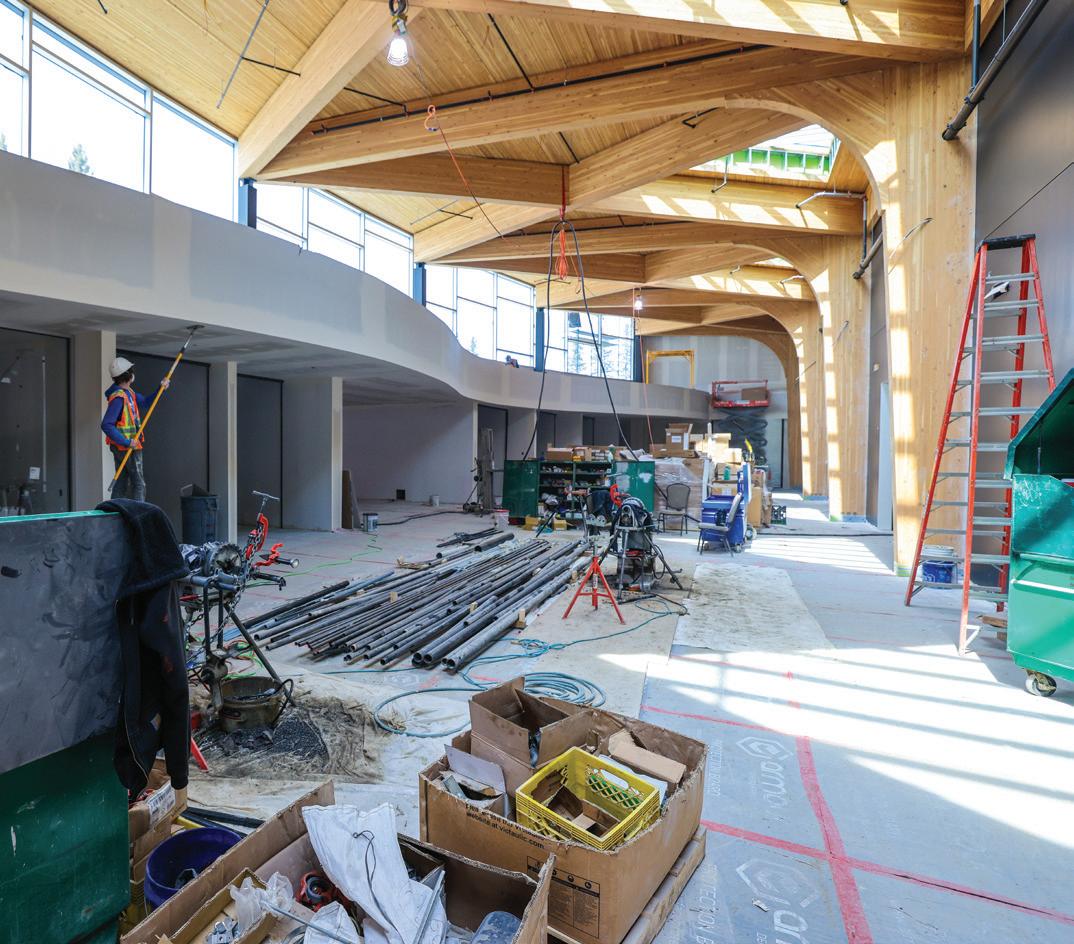
Hands-on experience is built into every program. The Land and Water Resources diploma provides students with an opportunity to have work-integrated training in applied environmental sciences during the field school. Careers in land reclamation, environmental
stewardship and rural planning all answer the growing demand for skilled workers focused on environmental sustainability.
Additionally, Olds College is the only institution in Alberta that trains surface land management professionals in land access. This is an incredible opportunity as having the skills to help facilitate relationships between land owners, industry and government for access and rights-of-way allows students to fill this critical role.
Bob and Carollyne Collier have a history of generosity to Olds College. Previous gifts include a $300,000 bursary to fund five annual scholarships as well as money to build The Hive, a state-of-the-art student lounge. In 2022, the Colliers gifted the Werklund School of Ag Tech $2 million to enhance student learning and experiences.
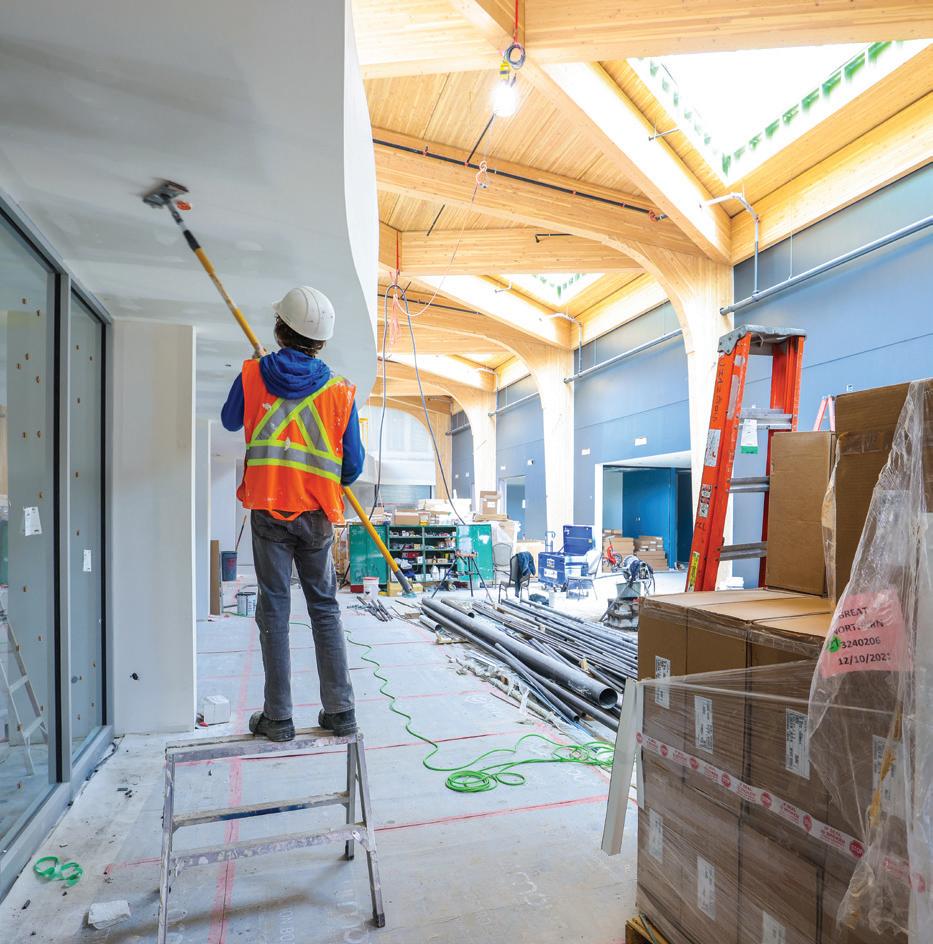
The agriculture industry is undergoing a major paradigm shift, requiring not only strong agronomic or animal husbandry skills, but a good understanding of technology and business.
Bob was a life-long entrepreneur and admires the innovation taking place at the College. The funds will go towards the development and delivery of enhanced academic programming, providing students with opportunities to attend conferences, forums, educational courses, guest lecturers and speakers.
Additionally, the funds will help support smart ag applied research and the development of the Olds College Smart Farm as a leading-edge learning, demonstration and applied research environment for students, producers, and the agriculture sector in Alberta and around the globe.
In recognition of their recent $2 million gift, the heart of the new Werklund Agriculture and Technology Centre will be named the Bob & Carollyne Collier Student Commons, and will be a central gathering space for students, faculty and guests of Olds College. Thank you to the Colliers for their generous gift — it will impact students for generations to come.
Be sure to attend AgSmart 2023 in Olds, Alberta — August 1-2, 2023 agsmartolds.ca Invest in the future.
Become a Smart Farm Investor, Partner, Neighbour or Friend today! Stay informed.
Visit oldscollege.ca/smartfarm to learn more about ongoing Smart Farm activities.
oldscollege.ca/smartfarm